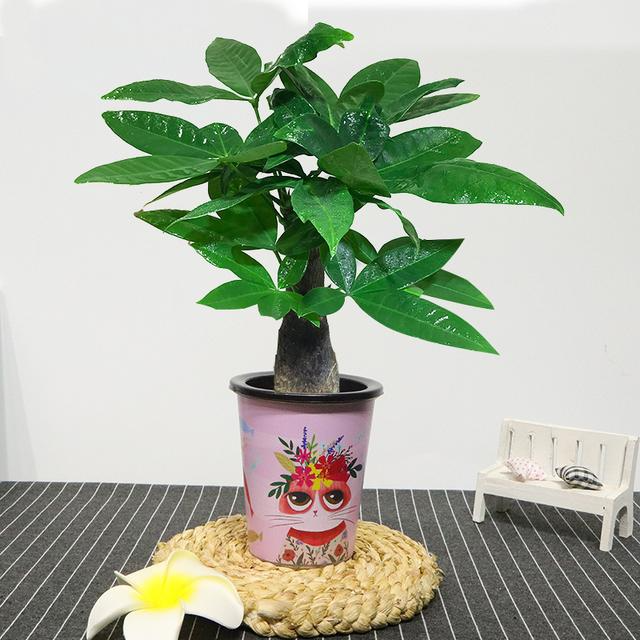A complete guide to common potted flowers at home (with pictures)
Lucky Bamboo
Plant Name | Lucky Bamboo | Aliases | Longevity bamboo, lucky bamboo, tower of wealth, bamboo tower, tower bamboo. | |
Family | Agavaceae, Dracaena genus. | |||
Morphological characteristics | An evergreen subshrubby plant; plant height over 1m, slender, upright with branches on the upper part; rhizomes running horizontally, nodular; leaves alternate or nearly opposite, papery, long lanceolate, with obvious 3-7 main veins, short petioles, dark green; umbels with 3-10 flowers growing in leaf axils or opposite the upper leaves, tepals 6, corolla bell-shaped, purple; berries nearly globose, black. | |||
Cultivate value | It is mainly used as a potted ornamental plant with high ornamental value. Lucky bamboo: a healthy plant suitable for the bedroom Lucky bamboo can help improve the air quality in rooms where windows are not often opened for ventilation. It has a disinfection function, especially in bedrooms. Lucky bamboo can effectively absorb exhaust gas and improve the privacy of the bedroom. | |||
Growth habit | It likes shade, humidity and high temperature. It is shade-tolerant and waterlogged-tolerant, has strong fertilizer tolerance and cold resistance. | |||
Cultivation Technology | Grow lucky bamboo in a vase with water, and change the water every 3 to 4 days. It is not advisable to change the water after it takes root, and water can only be added in time after it evaporates. Before adding water, store it in a container for one day, and keep the water clean and fresh. Do not use dirty water, hard water or water mixed with oil, otherwise the roots will easily rot. Do not place lucky bamboo next to the TV or in places where the air conditioner or electric fan often blows, so as to prevent the tip and edge of the leaves from drying out. |
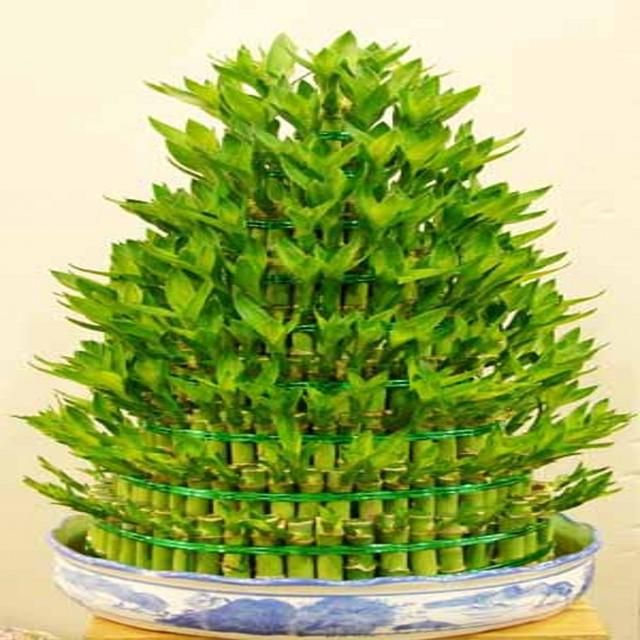
Backgammon
Plant Name | Backgammon | Aliases | Brazilian millennium wood, golden edge fragrant dragon blood tree, Brazilian wood | |
Family | Liliaceae, Dracaena | |||
Morphological characteristics | An evergreen tree of the Liliaceae family, 50 cm to 150 cm tall in potted plants, with branches; leaves clustered at the top of the stem, 40 cm to 90 cm long, 6 cm to 10 cm wide, curved in an arch shape, bright green and shiny; flowers are small and inconspicuous, and fragrant. | |||
Cultivate value | As an indoor ornamental plant in the home or office, the Brazilian iron plant looks very elegant when placed next to the sofa. | |||
Growth habit | It likes high temperature. If the temperature is below 13℃, the plant will go dormant and stop growing. It likes loose, well-drained soil. It should be potted in leaf mold or peat soil. | |||
Cultivation Technology | Brazilian iron should be placed in a well-lit place indoors; if the light is too weak, the stripes on the leaves will turn green, the base leaves will turn yellow, and lose their ornamental value. During the cultivation period, the water quality should be kept clean, and water should be watered 1 to 2 times a week. Too much water should not be used to prevent the trunk from rotting. In the summer when the temperature is high, the spray method can be used to increase the air humidity and spray water on the leaves to keep them moist. |
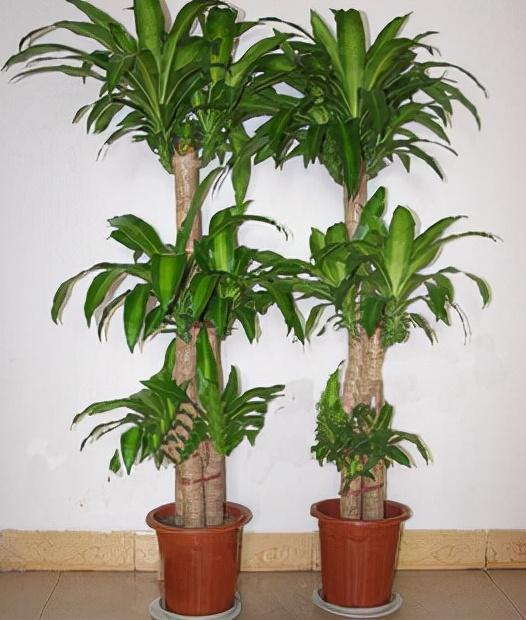
Gold Diamond
Plant Name | Aliases | Golden Diamond Philodendron, Spring Feather, Camptotheca acuminata | ||
Family | Philodendron | |||
Morphological characteristics | Palm-shaped, thick, deeply pinnate, shiny; petiole long and strong, aerial roots extremely developed and strong, hanging down in disorder. Leaves evenly matched, moderately stretched, thick and emerald green, with a rigid and bright surface, each leaf has a lifespan of up to 30 months. | |||
Cultivate value | Absorb indoor harmful organic gases and improve indoor air quality. | |||
Growth habit | It likes warm, humid and semi-shady environment, is afraid of severe cold and strong light, and is suitable for growing in sandy loam rich in humus and with good drainage. | |||
Cultivation Technology | Watering should be done when the topsoil is slightly dry, not too wet; if the pot soil is wet for a long time, the roots will rot; it should be placed in a semi-shaded place during the growing period, and avoid direct sunlight in summer; it should be placed near a window when growing indoors. Watering should always keep the soil moist, and when it is dry, the plant should be sprayed with water to wet and cool it down. May to September is the peak growing season, and fertilizer and water should be applied 1 to 2 times a month, but not too much. |
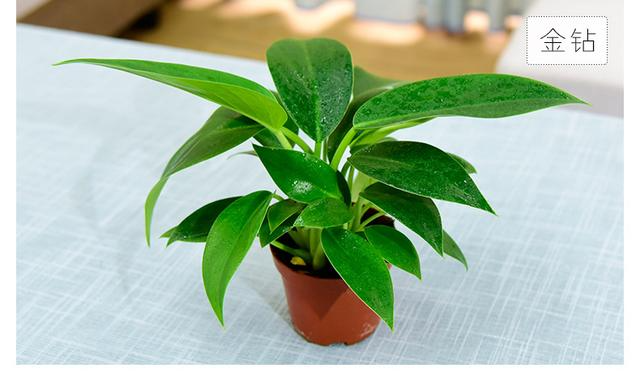
Smooth sailing
Plant Name | Smooth sailing | Aliases | Peace taro, Spathiphyllum taro, | |
Family | Araceae, Araceae | |||
Morphological characteristics | Perennial evergreen herbaceous foliage plant. The plant is 40-60 cm tall, with short rhizomes, mostly in clusters. The leaves are oblong or nearly lanceolate, gradually pointed at both ends, and wedge-shaped at the base. The flowers are spathes, slightly fragrant, leaf-shaped, and resemble palms, hence the name white palm. | |||
Cultivate value | White palm can inhibit the waste gas exhaled by the human body, such as ammonia and acetone. It can also filter benzene, trichloroethylene and formaldehyde in the air. The white palm-shaped flower petals grow in the middle of the green leaves, like a sailboat sailing in the sea, so it is also called "smooth sailing". It is suitable to be placed on the desk, front desk and other places to wish guests smooth sailing. | |||
Growth habit | It likes warm, humid and semi-shady environment and avoids strong direct sunlight. It is not cold-resistant, the suitable temperature for growth is 20-28℃, and the wintering temperature is above 10℃. | |||
Cultivation Technology | Potted Spathiphyllum requires loose soil with good drainage and ventilation. Heavy clay soil is not allowed. Liquid fertilizer should be applied every 1 to 2 weeks during the growing season . At the same time , sufficient water should be provided to keep the soil moist . During the high temperature period, water should be sprayed on the leaves to increase the air humidity. In late autumn and winter, the amount of watering should be reduced to keep the soil slightly moist. In winter, attention should be paid to cold protection and heat preservation, while keeping the soil moist. |
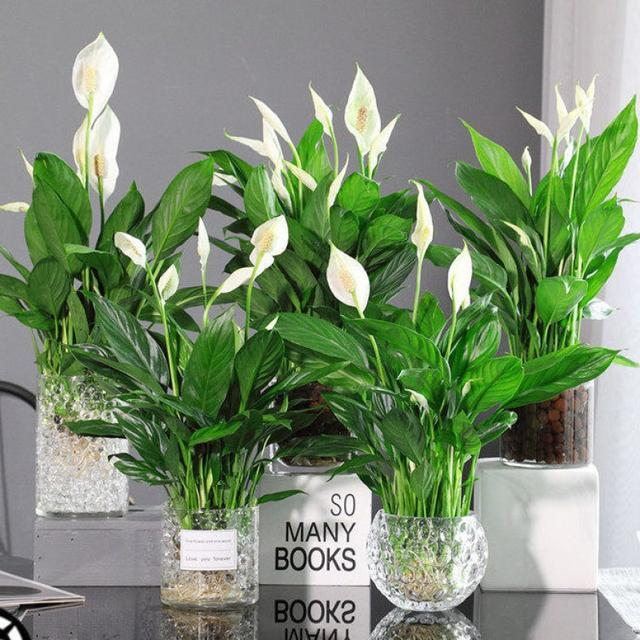
Plant Name | Cycad | Aliases | Cycas revoluta, Pteris chinensis ... Fire-avoiding banana | |
Family | Cycadaceae Cycas | |||
Morphological characteristics | An evergreen palm-like woody plant; the stem is cylindrical and unbranched; the stem is densely covered with persistent leaf bases and leaf scars, and is scale-like; the leaves are spirally arranged, growing from the top of the stem, and there are two types of leaves: nutrient leaves and scale leaves. The nutrient leaves are pinnate, | |||
Cultivate value | The cycad tree has a peculiar shape, lush green leaves, and a strong tropical charm. It is suitable to arrange multiple cycads with rocks to form a scenic spot. | |||
Growth habit | It likes light and tolerates partial shade. It likes warmth and is not very cold-resistant. It likes fertile, moist and slightly acidic soil, but can also tolerate drought. It grows slowly, and plants over 10 years old can bloom. | |||
Cultivation Technology | Water it once every half a month in spring. During the peak growth season from late spring to summer, allow it to fully receive sunlight. Water it when it is dry, keep the soil moist, and spray water on the leaves in the morning and evening. Apply a lighter liquid fertilizer every ten days. Gradually control the frequency and amount of watering after autumn. Allow it to fully receive direct sunlight. Spray water appropriately when the temperature is high. In winter, control the amount and frequency of watering, and water it about once every half a month. |
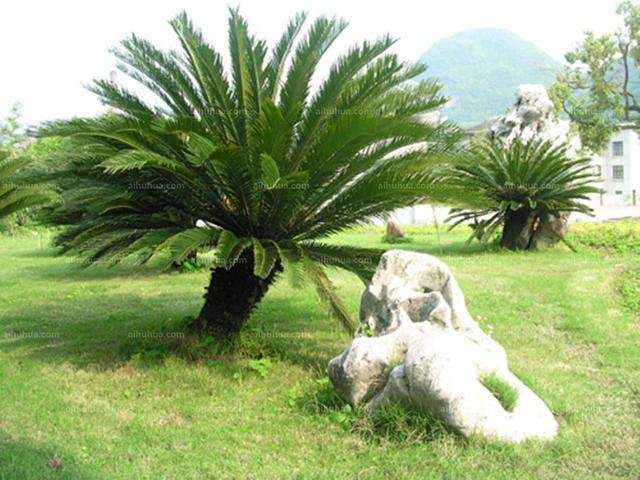
Plant Name | Miniature Coconut | Aliases | Dwarf coconut palm, miniature palm, dwarf palm | |
Family | Palmaceae Coconut | |||
Morphological characteristics | When the miniature coconut is potted, the plant height does not exceed 1 meter. Its stem is slender and upright, unbranched, dark green, with irregular rings. The leaves grow from the top of the stem, pinnate compound leaves, fully divided, with broad lanceolate lobes, 20 to 40 pinnate leaflets, sickle-shaped, dark green, and shiny. | |||
Cultivate value | It can purify benzene, trichloroethylene and formaldehyde in the air at the same time, and is a "high-efficiency air purifier" among plants. | |||
Growth habit | It likes warm, moist and semi-shady environment, is not cold-resistant, likes weak light, and avoids strong direct sunlight; it is relatively drought-resistant and water-resistant, and likes well-drained, fertile and moist soil. The suitable growth temperature is 20-30℃, and it enters dormancy at 13℃. The lowest temperature for wintering is 3℃. | |||
Cultivation Technology | Generally, liquid fertilizer should be applied 1-2 times a month during the growing season, and little or no fertilizer should be applied in late autumn and winter. The principle of watering is to keep the soil in the pot moist. When the air is dry in summer and autumn, spray the plants with water frequently, and reduce the amount of watering appropriately in winter to facilitate overwintering. |

Pothos
Plant Name | Pothos | Aliases | Devil's ivy, Caryophylle, Bamboo-leaf grass | |
Family | Araceae, Chlorophytum | |||
Morphological characteristics | The Pothos vine is several meters long and often grows on rocks and tree trunks in rainforests in tropical regions. It has aerial roots between the nodes. As it grows older, the stems become thicker and the leaves also become larger, and it can grow into a huge vine. A few leaves will also have slightly yellow or white mottled spots. | |||
Cultivate value | Green radish: Improve air quality and eliminate harmful substances. Green radish has strong vitality and strong ability to absorb harmful substances. It can help improve the air quality in rooms that are not often ventilated. In addition to its high ornamental value, it can also effectively absorb and remove pollutants such as formaldehyde, benzene, trichloroethylene, etc. in indoor air, and is a natural "air purifier". | |||
Growth habit | It likes warm, humid and semi-shady environment, and requires loose, fertile and well-drained soil; it is sensitive to light and avoids direct sunlight; it can tolerate a relatively dry environment and still grows well when the air humidity is 40% to 50%. | |||
Cultivation Technology | The pot soil should be loose, fertile, and rich in organic matter; the green radish requires a high temperature and strong scattered light environment to grow; water moderately, keep the pot soil dry, and spray water on the leaves and backs frequently. In summer and autumn, spray water on the leaves every morning, noon, and evening to increase humidity; apply thin liquid fertilizer once every 10 days. The plant has many branches and should be properly pruned. |
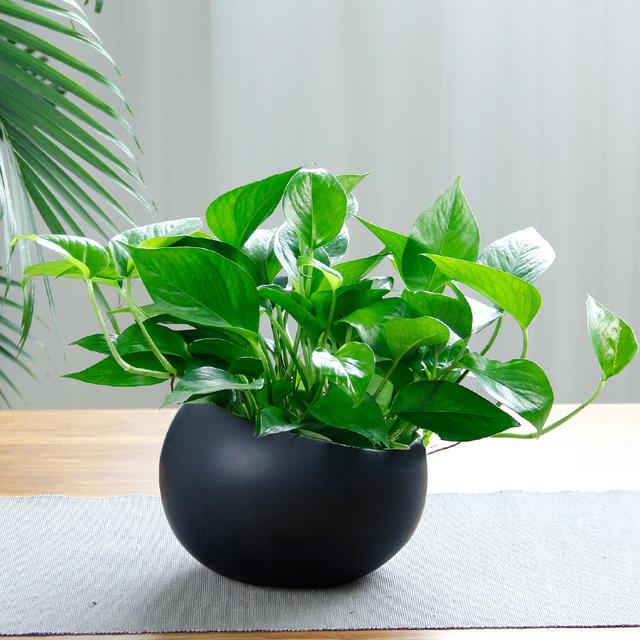
Plant Name | Tiger tail orchid | Aliases | Tiger skin orchid, brocade orchid, golden-edged tiger tail orchid, silver-veined tiger tail orchid. | |
Family | Agavaceae, Sansevieria | |||
Morphological characteristics | The underground stem is branchless, the leaves are clustered, tubular in the lower part, flat in the middle and upper parts, the sword-shaped leaves are rigidly upright, the plant height is 50 cm to 70 cm, the leaf width is 3 cm to 5 cm, the leaf margin is entire, the surface is milky white, light yellow, and dark green, with horizontal stripes. | |||
Cultivate value | Putting a pot of Sansevieria in the bathroom can absorb moisture and kill bacteria. | |||
Growth habit | It is drought-resistant, moisture-resistant and shade-tolerant and can adapt to various harsh environments. | |||
Cultivation Technology | Watering should be moderate, not too wet; from spring to autumn, when the plant grows vigorously, watering should be sufficient; during the winter dormancy period, watering should be controlled to keep the soil dry, and watering should be avoided when pouring into the leaf clusters; water accumulation should be avoided to avoid rot and the leaves below being broken; fertilization should not be excessive. During the peak growth period, fertilizer can be applied 1 to 2 times a month, and the amount of fertilizer should be small. |
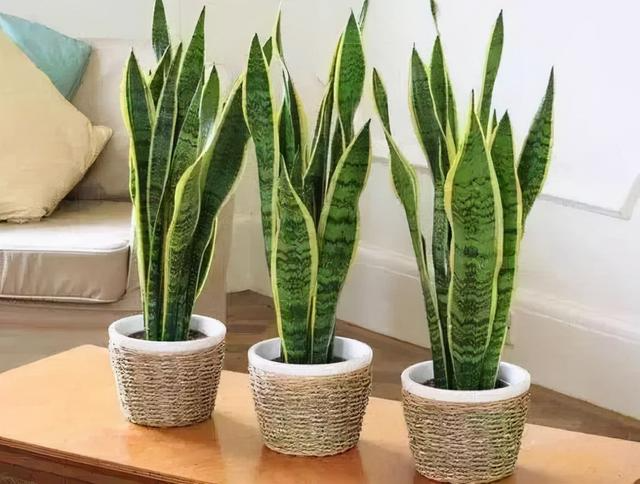
Plant Name | Podocarpus | Aliases | Podocarpus macrophylla , Podocarpus macrophylla, Chinese fir, golden pine, cypress, Podocarpus macrophylla, southern cypress | |
Family | Podocarpaceae , Podocarpus | |||
Morphological characteristics | It is shrub -like, with short and dense leaves, mostly growing on the top of the twigs, and white powder on the back. | |||
Cultivate value | The best viewing tree for the courtyard, you can trim it into a bonsai yourself, and it has a very high ornamental value. Meaning: longevity and good luck. | |||
Growth habit | It likes warm, humid and semi-shady environment, has slightly poor cold resistance, is afraid of waterlogging and direct sunlight, and requires fertile, well-drained sandy loam. | |||
Cultivation Technology | The best time for transplanting is in spring, March to April. Small seedlings need to be transplanted with soil, large seedlings need to be transplanted with soil balls, and potted plants are also available. Water thoroughly after planting. Keep the soil moist during the growing season . In the hot summer season, it needs to be placed in a semi-shaded place for maintenance. Fertilize once every two months. In winter, potted plants should be protected from cold, the pots can be buried in the soil, and watering should be reduced. |
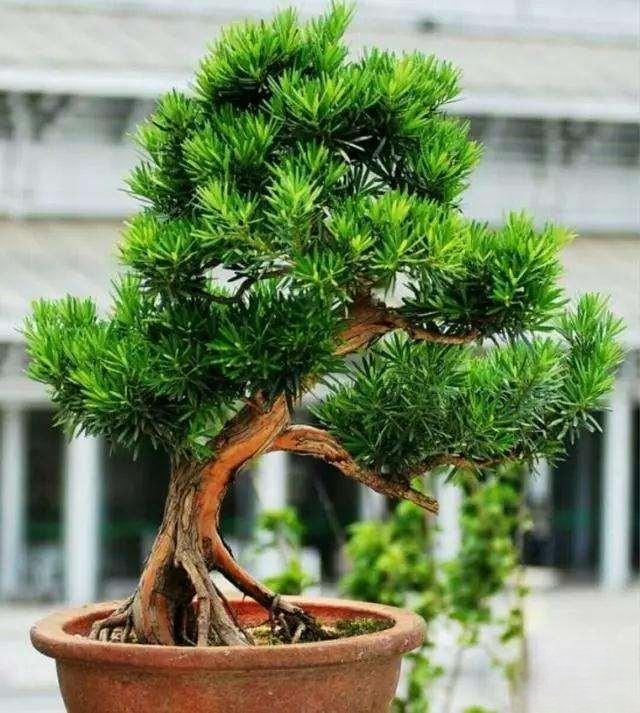
Chlorophytum
Plant Name | Chlorophytum | Aliases | Potted plants, hook orchid, osmanthus orchid, hanging bamboo orchid, crane orchid | |
Family | Liliaceae, Chlorophytum | |||
Morphological characteristics | Chlorophytum is a perennial herb with clustered cylindrical, hypertrophic fibrous roots and rhizomes; the edges of the green leaves are inlaid with yellow and white stripes on both sides or in the middle; it has flowers, which are white and bloom in spring and summer, and can also bloom indoors in winter. | |||
Cultivate value | It can absorb 95% of carbon monoxide and 85% of formaldehyde in the air, can photosynthesize under weak light, and can absorb toxic and harmful gases in the air. A pot of spider plant in a room of 8 to 10 square meters is equivalent to an air purifier. Generally, 1-2 pots of spider plants are kept in the room, which can release oxygen for 24 hours and absorb carcinogens such as formaldehyde, styrene, carbon monoxide, and carbon dioxide in the air. It has a particularly strong absorption capacity for certain harmful substances, such as 95% and 85% of mixed carbon monoxide and formaldehyde in the air. Spider plants can also decompose benzene and absorb relatively stable harmful substances such as nicotine in cigarette smoke. Therefore, spider plants are also called green purifiers for indoor air. | |||
Growth habit | It likes warm, humid and semi-shady environment. It has strong adaptability, is relatively drought-resistant, not very cold-resistant, and can also tolerate weak light. | |||
Cultivation Technology | The potting soil should always be kept moist, and the leaves should be sprayed with water 1 to 2 times a day during the vigorous growth period to increase the air humidity; it should be watered once in the morning and evening in summer, once a day in spring and autumn, and forbidden to keep it moist in winter. It can be watered once every 4 to 5 days, and the amount of watering should not be too much; liquid fertilizer should be applied once every two weeks during the growing season; Chlorophytum likes semi-shaded environment and can be cultivated in a bright indoor environment all year round. |
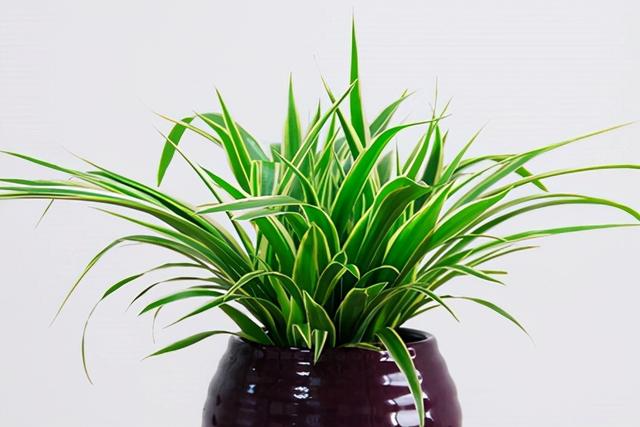
Plant Name | Lily | Aliases | Snowy rib grass | |
Family | Araceae, Dieffenbachia | |||
Morphological characteristics | The plant is upright, with lanceolate, leathery, sharp-pointed, dark green leaves; there are large silver-gray stripes on both sides of the midrib, and the leaf margins and midrib are dark green; it has strong growth potential and is easy to branch. | |||
Cultivate value | Purify formaldehyde and remove volatile organic compounds. The higher the concentration of pollutants in the air, the more it can exert its purification ability! Therefore, it is very suitable for dark rooms with poor ventilation conditions. | |||
Growth habit | The suitable temperature for growth is 18-30℃. It likes moisture and is afraid of dryness. It tolerates shade and is afraid of strong light. | |||
Cultivation Technology | The soil should be fertile, loose, and acidic loam with strong water retention. It likes moisture and is afraid of dryness. It needs sufficient water during the growth period of stems and leaves. In addition to normal watering, spray water every morning and evening. Keep the air humidity at 60% to 70% in summer and around 40% in winter. However, when the room temperature is low in winter, the amount of watering and spraying should be reduced, otherwise the pot soil will be too wet, the roots will easily rot, and the leaves will turn yellow and wither. |
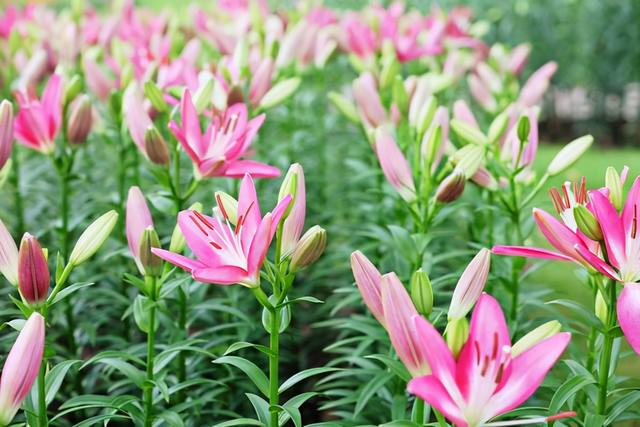
Plant Name | Guanyin Bamboo | Aliases | Phoenix bamboo, rice bamboo, tendon bamboo, Penglai bamboo | |
Family | Gramineae, Bamboo | |||
Morphological characteristics | The culms are densely clustered, short and hollow; the culms are 1 to 3 meters high, 0.5 to 1.0 cm in diameter, with drooping leafy branches, each branch has 9 to 13 leaves, the leaves are small, linear-lanceolate to lanceolate, 3.3 to 6.5 cm long, 0.4 to 0.7 cm wide. The plants are clustered, bent and drooping. | |||
Cultivate value | It is often used for potted viewing, to embellish small courtyards and living rooms, and is also often used to make bonsai or as a low hedge material. | |||
Growth habit | It likes warm, humid and semi-shady environment, has poor cold resistance, is not resistant to strong sunlight, and is afraid of waterlogging. | |||
Cultivation Technology | It has poor cold resistance and should be moved indoors to keep warm in winter. It should not be exposed to the sun in summer and should be placed under a shade for maintenance. It should be watered frequently during the active growth period to keep the soil moist, but avoid water accumulation. It should be watered once every 1 to 2 days on average in summer and less in winter, but the soil must be kept moist to prevent "dry freeze". Fertilizer should be applied 2 to 3 times during the growing period each year. At the same time, branches that grow too long should be pruned short. |
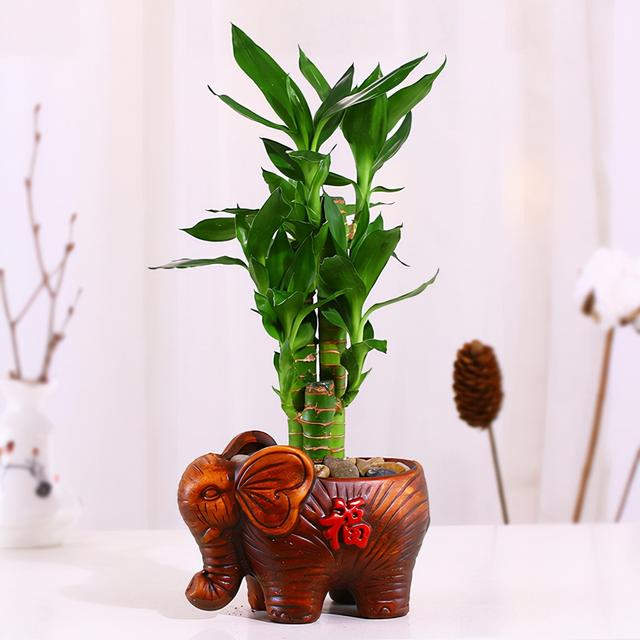
Plant Name | Areca palm | Aliases | Yellow coconut, purple sunflower | |
Family | Palmaceae, Areca palm | |||
Morphological characteristics | It is a clump of evergreen shrubs or small trees. The stem is smooth, yellow-green, without burrs, covered with wax powder when young, with obvious leaf scars in the shape of rings. The leaves are smooth and slender, pinnate compound leaves, completely divided, 40 to 150 cm long, with slightly curved petioles and soft tips; the lobes are linear-lanceolate, asymmetrical on both sides, the middle lobe is about 50 cm long, the top lobe is only 10 cm, the ends are long and gradually pointed, often with 2 short lobes, and the main vein on the back is raised. | |||
Cultivate value | Potted Areca palm is a high-end potted foliage plant for decorating living rooms, dining rooms, conference rooms, family rooms, study rooms, bedrooms or balconies. It can also be used as medicine to treat vomiting blood, hemoptysis, blood in the stool, and metrorrhagia. It is graceful and generous, and is known as the "handsome man in green." | |||
Growth habit | It likes a warm, humid, semi-shady and well-ventilated environment. It is not cold-resistant, but is relatively shade-tolerant and afraid of the scorching sun. | |||
Cultivation Technology | Watering should follow the principle of "dry through, wet through" according to the season. In dry and hot seasons, water more appropriately, and in low temperature and rainy seasons, control watering. Liquid fertilizer can be applied all year round. In summer, nitrogen-containing organic fertilizer can be applied appropriately, and in winter, organic fertilizer such as sesame paste residue can be applied. Rotate the flower pot regularly, trim the lower and internal dead leaves frequently, and pay attention to trimming the crown shape. In winter, the indoor temperature must be kept above 10℃. |
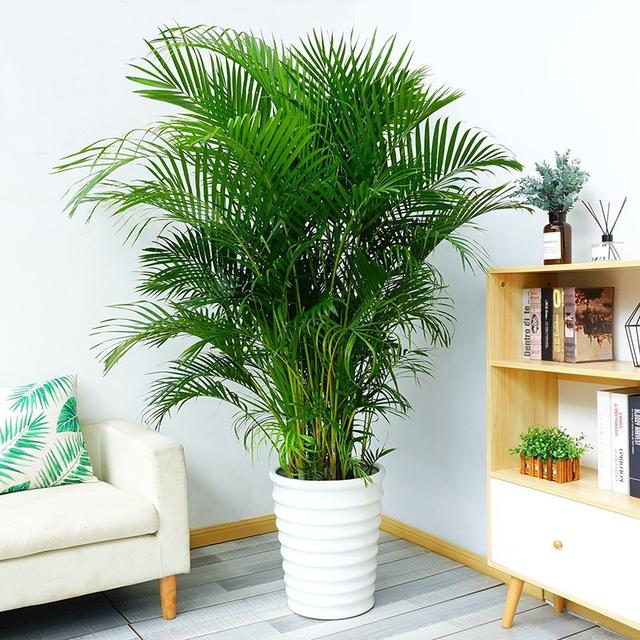
Peacock arrowroot (yes)
Plant Name | Peacock arrowroot | Aliases | Blue banana, five-color kudzu vine | |
Family | Marantaceae, Maranthus | |||
Morphological characteristics | Perennial evergreen herb. 30-60 cm tall, 15-20 cm long, 5-10 cm wide, ovate-elliptical, thin, leathery leaves, purple-red petioles. The green leaves have a faint metallic luster and are bright and colorful. Feathery, dark green, long oval velvety patches are distributed on both sides of the midrib, arranged alternately left and right. The back of the leaves is purple-red. | |||
Cultivate value | It can remove ammonia pollution in the air (it can remove 0.86mg of formaldehyde and 2.19mg of ammonia within 10 square meters). | |||
Growth habit | It likes partial shade, cannot tolerate direct sunlight, and adapts to growing in a warm and humid environment. | |||
Cultivation Technology | The potted peacock arrowroot should be planted in loose, fertile, well-drained, slightly acidic loam rich in humus. It should be given sufficient water during the growing period . In addition to keeping the pot soil moist in summer and autumn, it is also necessary to spray water on the leaves frequently to cool and moisturize. Avoid dry air and dry pot soil, but do not allow water to accumulate. After late autumn, the water should be controlled to help it resist the cold and survive the winter. |
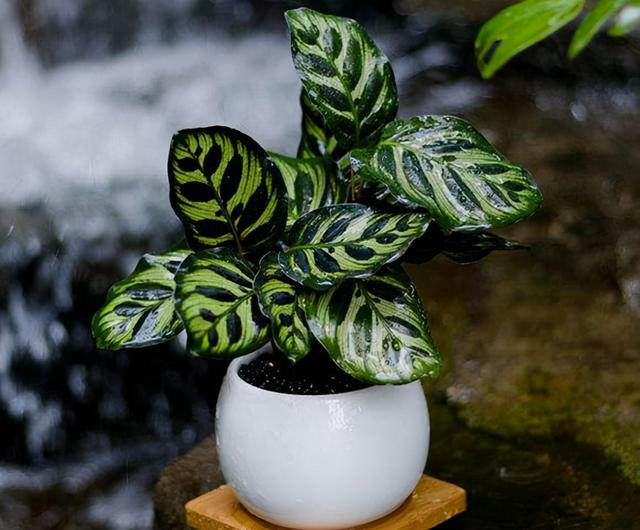
Plant Name | ivy | Aliases | Tugu vine, sky-piercing wind, triangular wind, creeper, scattered bone wind, maple pear vine | |
Family | Araliaceae, Ivy | |||
Morphological characteristics | The stem has air roots for climbing, the young leaves and inflorescences are covered with star-shaped scales, the leaves are petiolate and thick, and the leaves of the grape branches are slightly triangular and palm-shaped. Its fruits, seeds and leaves are all poisonous. | |||
Cultivate value | The champion of formaldehyde absorption, ivy, is currently the most effective indoor plant for absorbing formaldehyde. Each square meter of ivy leaves can absorb 1.48 mg of formaldehyde, and the total area of leaves of two pots of adult ivy is about 0.78 square meters. At the same time, ivy can also absorb toxic and harmful substances such as benzene. Under 24-hour light conditions, it can absorb 90% of indoor benzene. According to speculation, only 2-3 pots of ivy are needed to purify the air in a 10-square-meter room. It can also absorb particulate dust. It can also effectively resist carcinogens in nicotine. Meaning: marriage, growing old together, and loyal relationship. | |||
Growth habit | It likes warm and shady environment and avoids direct sunlight, but likes sufficient light. It is relatively cold-resistant and has strong resistance. It is not very demanding on soil and water, and neutral and slightly acidic are best. | |||
Cultivation Technology | The cultivation and management of ivy is simple and extensive, but it needs to be planted in a place with moist soil and good air circulation; potted plants can be tied to various supports and pulled to shape them. They can be maintained under a shade shed in summer and placed in a greenhouse for wintering. The indoor air humidity should be maintained and not too dry, but the potting soil should not be too wet. |
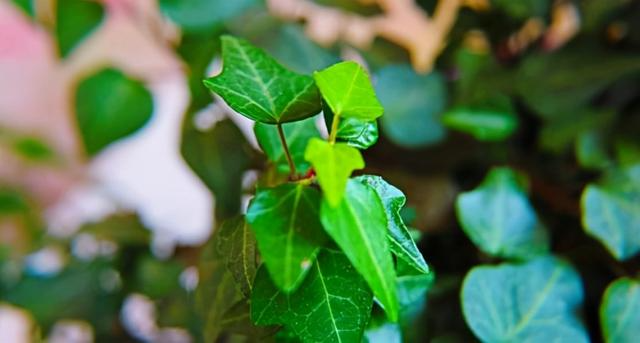
Clivia
Plant Name | Clivia | Aliases | Clivia miniata, Lycoris radiata, Lycoris radiata, Damun | |
Family | Amaryllis , Clivia | |||
Morphological characteristics | Clivia is a perennial herb with fleshy fibrous roots and pseudobulbs at the base of the leaves. The leaves are sword-shaped, up to 45 cm long, arranged alternately, and have entire margins. The umbels are terminal, with 7 to 30 small flowers in each inflorescence, and up to 40 or more. The small flowers have stalks and are arranged in an umbel shape at the top of the flower. The flowers are funnel-shaped, upright, and yellow or orange. It can bloom all year round, mainly in spring and summer. | |||
Cultivate value | Clivia: A freshener that releases oxygen and absorbs smoke. A mature Clivia can absorb 1 liter of air in a day and night, releasing 80% of oxygen, and can photosynthesize even in extremely weak light. It does not emit carbon dioxide at night. Two or three pots of Clivia in a room of more than ten square meters can absorb the smoke in the room. Especially in the cold winter in the north, because the doors and windows are closed and the indoor air is not circulating, Clivia will play a good role in regulating the air and keeping the indoor air fresh. Meaning: A beautiful woman in the valley, a gentleman among flowers, a king with a subtle fragrance and elegance | |||
Fertilization | Eggshell powder and fermented fish water are good phosphorus fertilizers , and rice husk ash and cigarette ash are readily available potassium fertilizers (fertilization in autumn) | |||
Growth habit | Avoid strong light, it is a semi-shade plant, likes coolness and avoids high temperature. It likes fertile, well-drained soil and moisture, and avoids dry environment. | |||
Cultivation Technology | Clivia is suitable for soil rich in humus. Generally, water it once a day in spring; water it twice a day on sunny days in summer, water it once every other day in autumn, and water it once a week or less in winter. | |||
Watering | The soil should not be too dry or too wet. Each time you water, you must water thoroughly, and you should water more after the buds appear. You can combine watering and fertilization by applying fermented bean cake water, light fish water, and water chestnut water every 20 days or so. When the room temperature is low, you should control watering to prevent the pot soil from being too wet. Too wet pot soil will cause the plant to rot and die, but you can't let the pot soil be too dry. | |||
illumination | Clivia is easy to bloom under short-day conditions. Exposure to the scorching sun and direct sunlight in summer will cause sunburn and inhibit growth. From May to September every year, it should be cultivated under a shade shed or in a semi-shaded environment without direct sunlight. But the longer the sunlight exposure in winter , the better. Weak light during flowering can prolong the flowering period. It likes warmth and coolness, and avoids severe cold and heat . It generally grows well in a temperature of 18-20 ℃ and stops growing below 5 ℃. After Clivia is brought into the room, the light is limited and the flower pot needs to be moved manually for adjustment. Under normal circumstances, the flower pot should be placed in a sunny place indoors during the day so that the sun can shine on the plant. Before flowering, the flower pot should also be placed under a fluorescent lamp at night to supplement the light. Since the two rows of leaves of Clivia are opposite, if the light is in one position for a long time, the leaves will grow unevenly, affecting the ornamental effect. Therefore, when adjusting the light, pay attention to the direction of the leaves, and change the sunny side every 10 days or so. There are two ways to place flower pots indoors: one is to place the leaves parallel to the sunny windows, and the other is to place the leaves perpendicular to the sunny windows. The latter is better than the former. | |||
Extend flowering period | The flowering period of Clivia is mostly from December to March of the following year. The way to extend the flowering period is to place it in a dark place when the flower is about to bloom, control watering appropriately, and keep the temperature at 8-12℃. In this way, the flowering period can be extended by 10-20 days. |
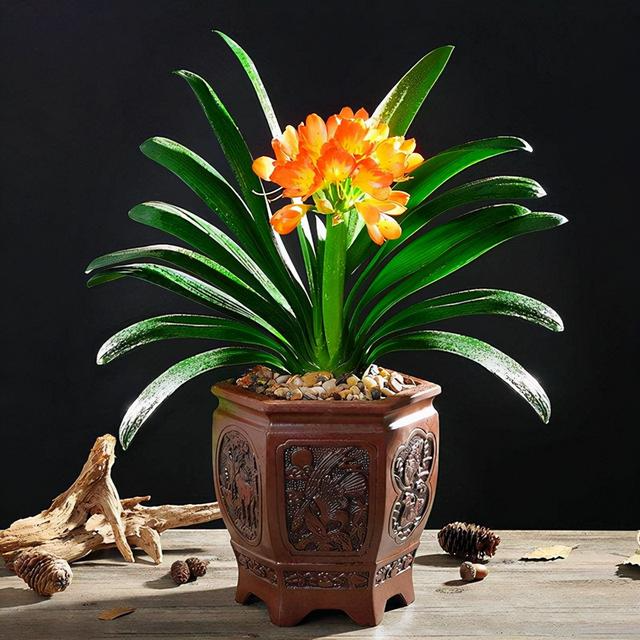
Plant Name | Heart of Gold | Aliases | Golden Heart Brazilian Ironwood, Brazilian Millennium Wood | |
Family | Liliaceae, Dracaena | |||
Morphological characteristics | The potted plant is 50 cm to 150 cm tall and has branches; the leaves are clustered at the top of the stem, 40 cm to 90 cm long, 6 cm to 10 cm wide, curved in an arch shape, bright green and shiny; the flowers are small and inconspicuous, and fragrant. | |||
Cultivate value | It can effectively absorb harmful gases such as formaldehyde and benzene in the room. | |||
Growth habit | It likes high temperature, high humidity and well-ventilated environment. The suitable growth temperature is 20-30℃. It likes light and is also shade-tolerant. It is afraid of the scorching sun and avoids dryness and drought. It likes loose and well-drained sandy soil. | |||
Cultivation Technology | The potting soil for cultivation should have good drainage and ventilation. When watering, wait until the soil is 70% dry before watering. During the growing season, you should also spray water frequently to increase the surrounding humidity. If a single plant is placed indoors for viewing, in addition to spraying water, you can also place the flowerpot on a sand tray to create a humid microclimate. In the rainy season, prevent water accumulation in the pot. |
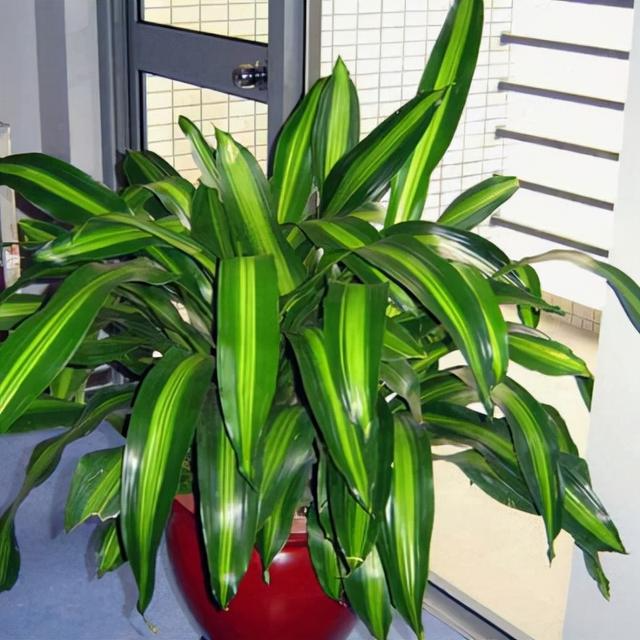
Money Tree
Plant Name | Money Tree | Aliases | Cistanche deserticola, Kapok | |
Family | Castanea | |||
Morphological characteristics | An evergreen small tree with palmate leaves, 7 to 11 leaflets, oblong or obovate. Beautiful plant shape, bright green leaves, hammer-shaped trunk. Very vigorous. Mature plants outdoors bloom and bear fruit in spring, summer, and autumn. | |||
Cultivate value | It is widely used in home and company decoration and beautification, and can improve the Feng Shui environment. Fortune tree: Fighting against the waste gas produced by tobacco burning. The fortune tree is evergreen all year round and can absorb toxic gases and release oxygen through photosynthesis. It can effectively absorb carbon monoxide and carbon dioxide pollution, and has a certain effect on resisting the waste gas produced by tobacco burning. | |||
Growth habit | It likes high temperature and high humidity environment, has poor cold resistance, and seedlings should avoid frost. It likes fertile, loose, breathable and water-retaining sandy loam, likes acidic soil, and avoids alkaline soil or heavy clay soil. It is relatively resistant to water and humidity, and slightly drought-resistant. It likes light, but has strong shade tolerance. | |||
Cultivation Technology | Watering should follow the principle of watering when the soil is dry and wet. In spring and autumn, watering frequency should be controlled according to the weather conditions, such as whether the soil is sunny or rainy, dry or wet . Generally, water once a day. When the temperature exceeds 35℃, water at least twice a day. Fertilize twice a month during the growing season. For the new leaves, pay attention to spraying water to maintain a high environmental humidity to facilitate their growth. Water once every 5 to 7 days in winter, and ensure sufficient light. |
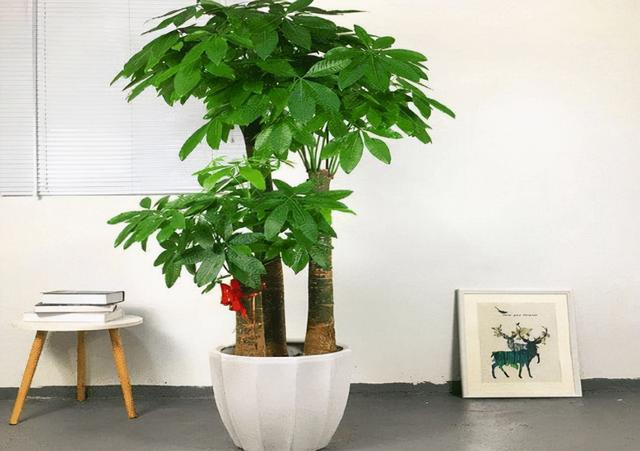
Plant Name | Anthurium | Aliases | Anthurium, anthurium, anthurium, red goosefoot | |
Family | Araceae, Anthurium | |||
Morphological characteristics | Anthurium is a perennial evergreen herbaceous flower; its plant height is generally 50 to 80 cm; it has fleshy roots and no stems, and the leaves grow from the rhizomes, have long petioles, are solitary, heart-shaped, bright green, and have sunken veins; the flowers are axillary, the spathe is waxy, round to oval, bright red, orange-red, or white, and the inflorescence is cylindrical and upright; it blooms all year round. | |||
Cultivate value | Its flowers are unique, with a spathe, bright and gorgeous color, rich colors, and are rare flowers in the world. It is suitable for weddings, celebrations and other festive occasions, and is suitable for giving to enthusiastic and generous friends. | |||
Growth habit | It likes warmth, shade and humidity, avoids heat and direct sunlight, and its roots are aerial, so it requires good ventilation. | |||
Cultivation Technology | The optimum temperature for the growth of Anthurium is 18℃ ~ 28℃. In spring and autumn, it is generally watered once every 3 days. If the temperature is high, it can be watered once every 2-3 days depending on the dryness and wetness of the substrate in the pot. In summer, it can be watered once every 2 days, and watered once more when the temperature is high. In winter, it is generally watered once every 5-7 days. Anthurium requires higher air humidity for growth, which generally should not be lower than 50%. |
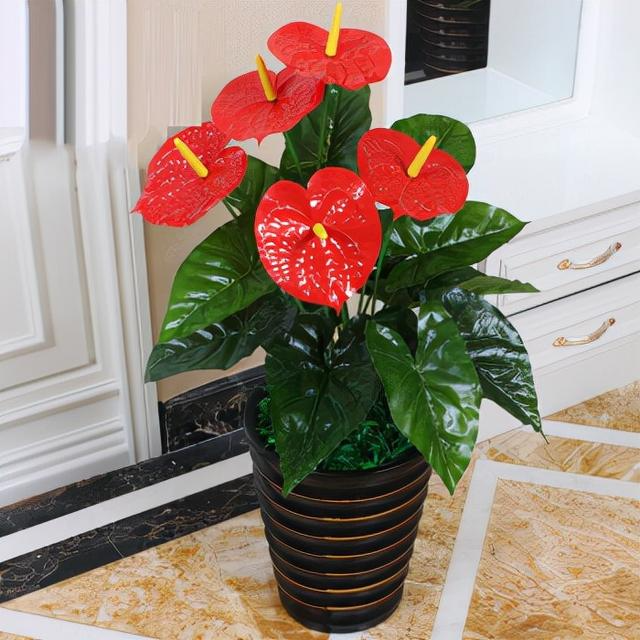
Aloe Vera
Plant Name | Aloe Vera | Aliases | Luhui, Nehui, Xiangdan, Nuhui | |
Family | Aloe | |||
Morphological characteristics | Evergreen, succulent herb | |||
Cultivate value | Potted aloe vera is known as an air purification expert. One pot of aloe vera is equivalent to nine biological air cleaners, which can absorb harmful substances such as formaldehyde, carbon dioxide, sulfur dioxide, carbon monoxide, etc. It is particularly strong in absorbing formaldehyde. Under 4 hours of light conditions, one pot of aloe vera can eliminate 90% of the formaldehyde in one square meter of air, kill harmful microorganisms in the air, and absorb dust, which plays a great role in purifying the indoor environment. When the harmful air in the room is too high, spots will appear on the leaves of aloe vera, which is a signal for help. As long as a few more pots of aloe vera are added indoors, the indoor air quality will return to normal. | |||
Growth habit | It likes a warm, dry, semi-shady environment; it is not cold-resistant, is afraid of high temperature and humidity, and avoids strong sunlight. | |||
Cultivation Technology | The most suitable growth temperature for aloe vera is 15-20 degrees Celsius, and the minimum temperature cannot be lower than 2 degrees Celsius. The soil of potted aloe vera should be kept dry and moist. Do not water it excessively. In summer, the temperature is high and the evaporation is large. Generally, it needs to be watered every 2 to 3 days. Water can be sprayed on the leaves in the morning and evening. In spring and autumn, keep the soil dry and water less. In winter, water it once a month. |

Cactus
Plant Name | Cactus | Aliases | Grass ball, Changsheng ball | |
Family | Cactaceae, Opuntia | |||
Morphological characteristics | Perennial succulent herb. | |||
Cultivate value | It has a strong anti-inflammatory and sterilizing effect. It is the best plant to reduce electromagnetic radiation in dealing with pollution. In addition, it absorbs carbon dioxide and releases oxygen at night. If you put it in your room at night, it can replenish oxygen and help you sleep. Purify the air, edible, medicinal, meaning: You are my angel/warmth | |||
Growth habit | It likes dryness and is drought-resistant, likes high temperature, and is not moisture-resistant or cold-resistant. |
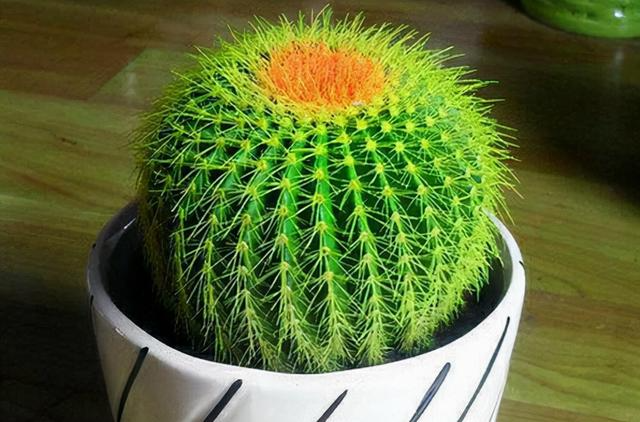
asparagus
Plant Name | asparagus | Aliases | Cloud pine, thorny winter, cloud bamboo | |
Family | Asparagus | |||
Morphological characteristics | The roots of Asparagus fern are slightly fleshy, the stems are soft and tufted, and the elongated stems are climbing; the true leaves are degenerated into scales, light brown, and are attached to the base of the leaf-like branches; the leaf-like branches are slender and tufted, and are triangular and horizontally spread out like feathers; | |||
Cultivate value | A protective umbrella that kills bacteria and viruses. The plant fragrance it contains has antibacterial ingredients that can remove bacteria and viruses in the air and has health-care functions. Therefore, the smell released by asparagus fern has bactericidal and antibacterial effects. In addition, it has high medicinal value. Dig its fleshy roots, wash off the dust and dirt on them, dry them for later use or use them fresh. The leaf-like branches can be picked as needed, and they all have the effects of relieving coughs, moistening the lungs, cooling blood and detoxifying. Can be used as medicine, meaning: congratulations on longevity | |||
Growth habit | It likes warm, humid and semi-shady environment, is not resistant to severe cold, drought and direct sunlight. | |||
Cultivation Technology | In winter, spring and autumn, watering should be properly controlled. Generally, water should be applied when the surface of the potting soil is dry. You can also adopt alternating watering of large and small amounts, that is, after 3 to 5 small amounts of water, water once thoroughly to keep the potting soil moist but not too much water. Watering should be done in the morning and evening in summer. The potting soil should be watered only when it is dry. Watering should be sufficient during the growing period, but not too much, otherwise the roots will easily rot. The plant should be allowed to penetrate into the soil quickly without water accumulating on the soil surface. Watering should be reduced after late autumn. |
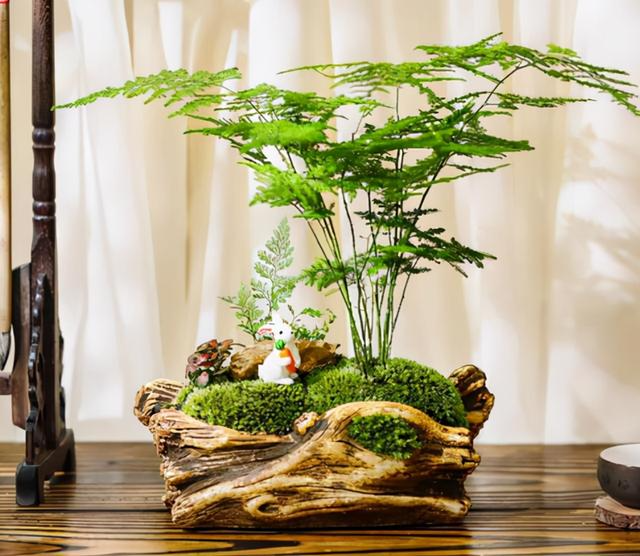
Plant Name | Water horizontal branch | Aliases | Wood dan, fresh branch, Zhizi, Yuetao, | |
Family | Rubiaceae, Gardenia | |||
Morphological characteristics | Most of the plants are relatively short; the trunk is gray, the twigs are green, the leaves are opposite or whorled on the main branches, obovate-oblong, 5 to 14 cm long, glossy and full-line, the flowers are solitary at the top of the branches or in the axils of leaves, white, and fragrant; the corolla is high-footed saucer-shaped, 6-lobed, and fleshy. | |||
Cultivate value | Water hyacinth is resistant to sulfur dioxide and can absorb sulfur to purify the atmosphere. It can be used as medicine, food, and can be made into bonsai. | |||
Growth habit | It likes warmth, humidity, sunlight, high air temperature and good ventilation. It is not cold-resistant, can tolerate partial shade, and is afraid of waterlogging. | |||
Cultivation Technology | Pay attention to watering during the seedling stage, keep the potting soil moist, and apply well-rotted thin fertilizer frequently; for potted gardenias, only water them with clean water after they bloom in August, and control the amount of watering; move them indoors before the Cold Dew in October and place them in a sunny place; strictly control watering in winter, but spray the leaves with clean water frequently; from May to July each year, when the vigorous growth period is about to stop, prune the plants to remove the tops to promote branching. |
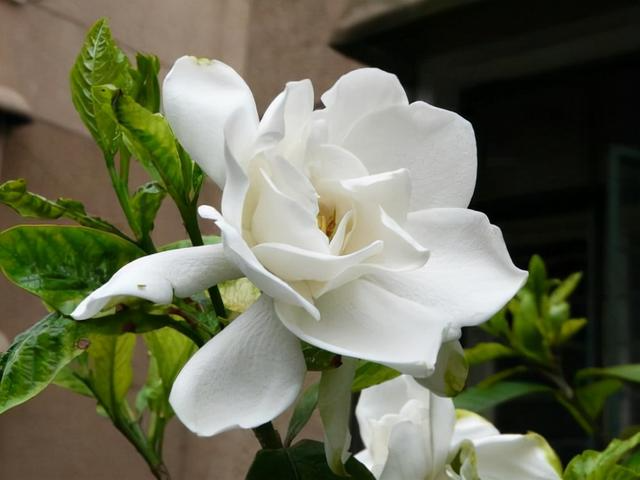
Plant Name | Poinsettia | Aliases | Ivory red , old beauty, Christmas flower, Christmas red, | |
Family | Euphorbiaceae , Euphorbia | |||
Morphological characteristics | It is violin-shaped, with narrow, lanceolate leaves at the top ; the leaves are hairy, thin, and have obvious veins; the leaves at the top near the inflorescence are bract-like, and the plant is red when it blooms. | |||
Cultivate value | The flowering period coincides with Christmas, so it is also called "Christmas red". This is a flower suitable for any blessing. It is the best flower to represent Christmas. In some weddings, you can also see red and white Christmas red decorations that mean "My heart is burning". It can also be used for courtship! Give it as a gift. | |||
Growth habit | It likes warm, humid and ventilated environment, but cannot tolerate low temperature. Strong sunlight and insufficient light are not conducive to its growth. When watering, it is necessary to prevent it from being too dry or too wet, which will cause the leaves at the bottom of the plant to turn yellow and fall off, and the branches to grow unevenly. In hot summer weather, the amount of watering should be increased appropriately, and water should not accumulate in the pot to avoid root rot. General fertile sandy soil is fine. During the growth and flowering season, apply liquid fertilizer every half a month or so . After autumn, some fertilizers rich in potassium and phosphorus can be added to promote the differentiation of flower buds and ensure that the bracts are bright red and pure. |
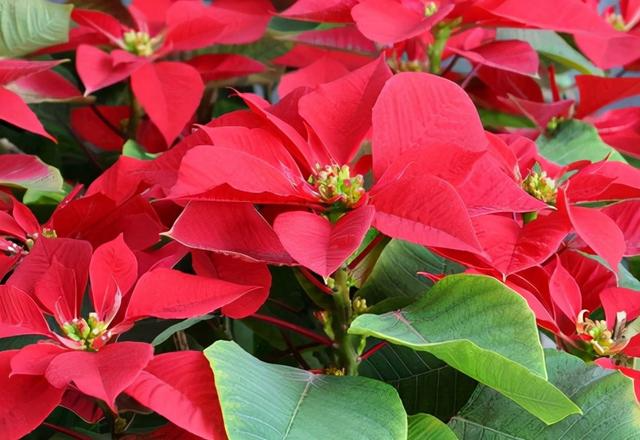
Plant Name | snow White | Aliases | Rhizoma leucoderma | |
Family | Dieffenbachia | |||
Morphological characteristics | Leaves: The shapes and colors vary, and the leaves are often inlaid with different patterns. Flowers: Several inflorescences in clusters. Fruit: The fruit is an oval berry, orange or red when ripe, with one seed. | |||
Cultivate value | Among the plants of the genus Dieffenbachia, the most beautiful and most ornamental one is Golden Queen, also known as White-stalked Rough-ribbed Grass. It has lanceolate bright green leaves inlaid with yellow-green patches. The color is soft, bright and elegant, and is popular both at home and abroad. | |||
Growth habit | It tolerates partial shade and avoids excessive sunlight, but too dark light will also cause the leaves to fade. It likes water and humidity, and needs to be watered more during the growing period from March to August. It needs to be watered frequently in summer to increase the humidity of the environment. It likes high temperature and is not cold-resistant. The suitable temperature for growth is 20-30℃. The lowest wintering temperature is above 12℃. | |||
Cultivation Technology | Cutting method |
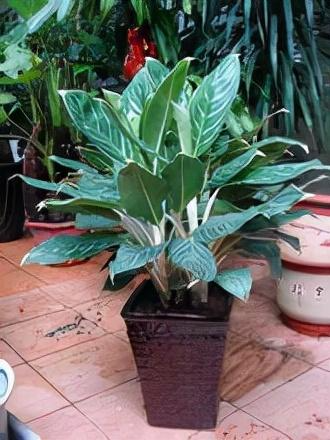
Plant Name | Good luck | Aliases | Pineapple Flower | |
Family | Bromeliaceae | |||
Morphological characteristics | It is evergreen all year round, with beautiful and colorful inflorescences. | |||
Cultivate value | In winter and spring, indoor ornamental flowers are commonly cultivated in red and pink, which can improve Feng Shui and absorb harmful substances such as formaldehyde, carbon dioxide, sulfur dioxide, and carbon monoxide. | |||
Growth habit | Red Fortune Plant likes a humid environment. You only need to keep the soil moist on weekdays. Watering is generally not necessary on rainy days. Watering should be done before noon, or in the morning and evening in summer, but it must be watered in the leaf cup, not just in the soil. Keep the leaves dry and clean at night. To increase humidity, add water to the growing environment, such as sprinkling water on the ground or starting a humidifier. | |||
Cultivation Technology | Red Fortune Plant grows best in loose, fertile, humus soil. For home cultivation, you can mix 2 parts of peat soil with 1 part of fine sand to make a culture soil. |
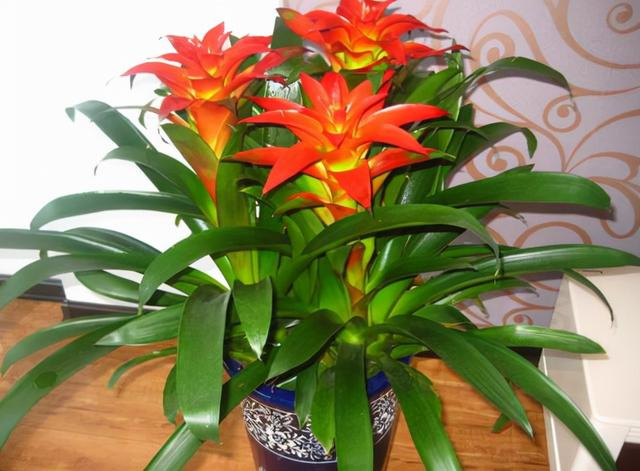
Eighteen Jazz, Camellia
Plant Name | 18 Jazz | Aliases | Datura, yabuchun, mountain camellia, wintersweet, camellia , evening camellia, camellia, western tea | |
Family | Theaceae | |||
Morphological characteristics | It is an evergreen broad-leaved shrub or small tree | |||
Cultivate value | There are three colors of flowers (yellow, pink, bright red), which means: simplicity, excellence, you are worthy of admiration | |||
Growth habit | It likes warm climate, the optimum growth temperature is 18-25℃, and the initial flowering temperature is 2℃. It is slightly cold-resistant, and most varieties can withstand low temperatures of -10℃ and summer heat, but growth is inhibited when it exceeds 36℃. It likes high humidity and avoids dryness. It likes fertile, loose, slightly acidic soil, and the pH is preferably 5.5-6.5. There are two times of branch shoots in a year, the first is spring shoots, which start in March and April, and summer shoots are produced in July-September. The flowering period is long, most varieties are 1-2 months, and the single flower period is generally 7-15 days. The flowering period is from February to March. |
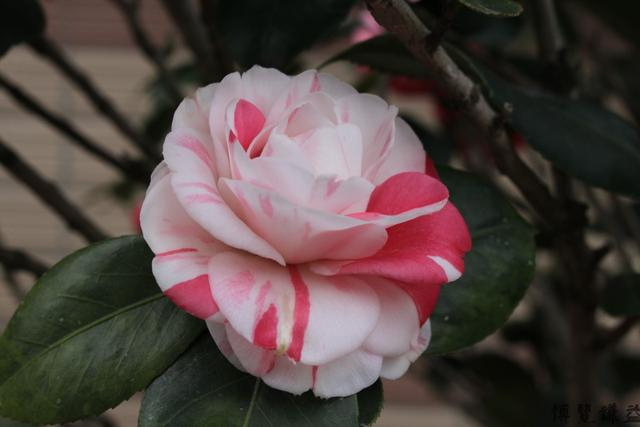
Plant Name | Azalea | Aliases | Rhododendron splendidum | |
Family | Rhododendron | |||
Morphological characteristics | The branches are sparse, and the young branches are densely covered with light brown flat hairs. | |||
Cultivate value | Garden viewing, forest belt under the tree meaning: take care of yourself for me, warm, crisp, strong feelings | |||
Growth habit | It likes warm and humid climate, tolerates shade, and avoids direct sunlight. When watering, the soil in the pot needs to be kept slightly moist, and drought or waterlogging should not occur. It is best to water it thoroughly when the topsoil is dry. The water used is preferably a fertilizer water mixed with ferrous sulfate organic fertilizer or a special chemical fertilizer. | |||
Cultivation Technology | To ensure a warm environment, the temperature should be around 15℃ in winter, around 30℃ in summer, and between 20 and 25℃ in spring and autumn. |
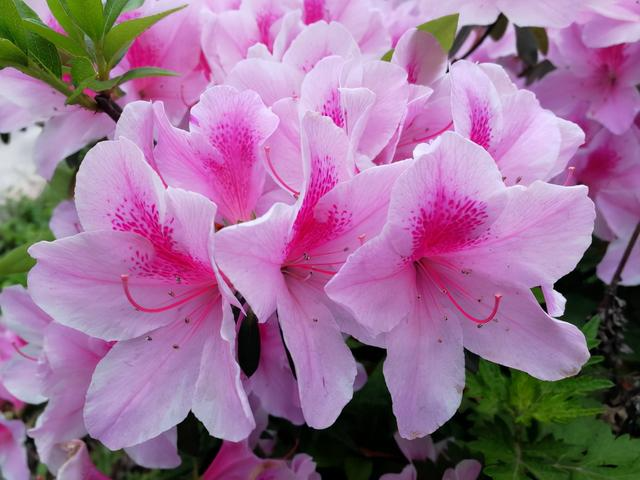
Plant Name | Tianxiang Pavilion | Aliases | Osmanthus fragrans | |
Family | Oleaceae Osmanthus | |||
Morphological characteristics | The flowers and leaves are lush and evergreen, the tree lives a long time, blooms in autumn, and is full of fragrance . It is a specialty ornamental flower and aromatic tree. | |||
Cultivate value | It is a rare new variety of Osmanthus fragrans in China. 1. It grows fast: transplanting a two-leaf, one-core seedling in the same year, it can grow more than one meter in height in one year. If trimmed, it can be cultivated into a potted flower with a crown width of 40-50cm. 2. The flower color is golden, the flowers are extremely large, better than jasmine, and it is a precious variety for garden beautification. The fragrance is rich, the flowering period is more than 200 days a year, and the fragrance remains unchanged all year round. Meaning: friendship, auspiciousness, honor, passing the exam is also called "winning the laurel." | |||
Growth habit | It can resist cold and high temperature and has strong vitality. | |||
Cultivation Technology | Generally, seedlings can be planted in neutral soil or red soil, and the survival rate of grafting and cutting is very high |
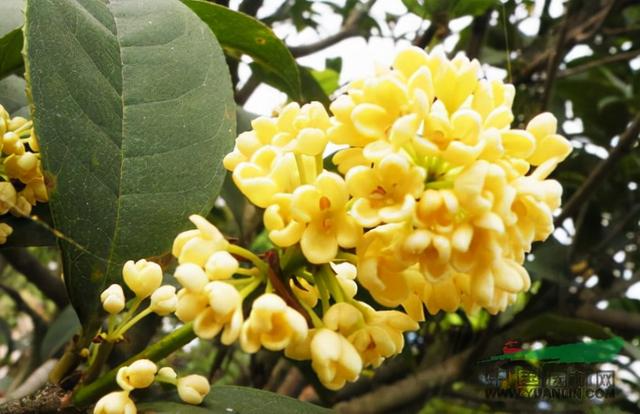
Rubber Tree
Plant Name | Rubber Tree | Aliases | Indian rubber tree, banyan tree, banyan tree. | |
Family | Ficus | |||
Morphological characteristics | The main trunk of the rubber tree is obvious, with few branches and aerial roots. The leaves are single and alternate, oblong, thick and leathery, bright green, with many parallel lateral veins, young leaves are red, and the petioles are thick; | |||
Cultivate value | Very suitable for indoor beautification. Small and medium-sized plants are often used to beautify living rooms and study rooms ; medium and large plants are suitable for arranging on both sides of the entrance hall and in the center of the lobby of large buildings, which looks majestic and can reflect the tropical scenery. Rubber tree: An all-rounder in eliminating harmful substances, the rubber tree is an all-rounder in eliminating harmful plants. It has a certain resistance to harmful gases such as carbon monoxide, carbon dioxide, and hydrogen fluoride in the air. The rubber tree can also eliminate inhalable particulate pollution and can effectively trap indoor dust. | |||
Growth habit | It likes warm and humid environment, and the suitable growth temperature is 20-25℃. It can safely overwinter at 5℃. It likes bright light, but avoids direct sunlight. It is resistant to dry air. It avoids clay soil, and is not resistant to barrenness and drought. It likes loose, fertile and well-drained slightly acidic soil . | |||
Cultivation Technology | Rubber trees are commonly propagated by cuttings and high pressure. Cutting propagation is relatively simple, very easy to survive and grow fast. |
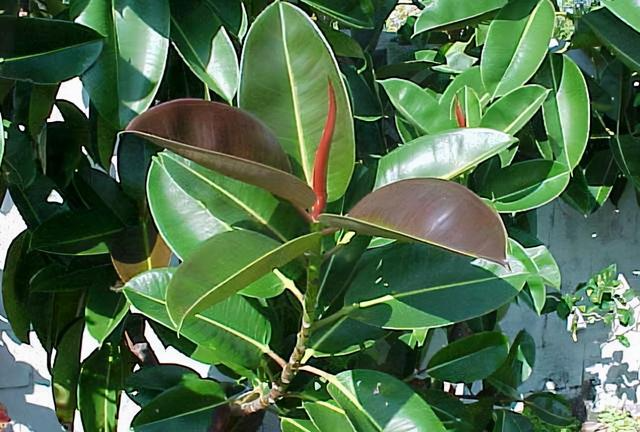
Plant Name | Ixora | Aliases | English Dan, Xian Dan flower, 100-day red, Rhododendron, English Dan flower, Water hydrangea, 100-day red | |
Family | Rubiaceae Ixora | |||
Morphological characteristics | The leaves of the Ixora are opposite, leathery, obovate to oblong- lanceolate , 6-13 cm long and 2-4 cm wide. The cymes are terminal, with short stalks and red branches, 6-7 cm long and 6-12 cm in diameter, with many red to orange flowers, very beautiful. | |||
Cultivate value | The Ixora has a beautiful shape, dense flowers, rich colors, and flowers to enjoy all year round. Meaning: Love | |||
Growth habit | It likes warm, humid and sunny environment. It is not cold-resistant, can tolerate semi-shade, and cannot tolerate waterlogging and strong light. Fertile, loose and well-drained acidic sandy loam is preferred. For potting, a mixture of culture soil, peat soil and coarse sand should be used, with a pH of 5-5.5. | |||
Cultivation Technology | Cutting propagation is mainly carried out, and branch cuttings, bud cuttings, and root cuttings can all take root. The best cutting period is spring and autumn. You can also select tender branches for cuttings in June . Pay attention to shade and moisture retention. The temperature is 20-25℃, and roots will take root in about 20 days. Seed propagation is carried out in spring, the temperature is 24℃, and it can germinate in about 10 days, but the seeds are not easy to take, so they should be pollinated artificially. | |||
Plant Name | Rose | Aliases | Rose | |
Family | Rosaceae Rosa | |||
Morphological characteristics | The flowers are small, only about 1.5 to 2.5 cm, with umbellate inflorescences. The plant is short and can be used as a small potted plant or to beautify flower beds. | |||
Cultivate value | One of the world's famous flowers, it can be used for beauty. The aromatic oil made from its flowers is a high-grade fragrance. Its flowers are used as medicine to regulate qi and blood circulation, relieve liver and depression, and mainly treat liver and stomach pain, loss of appetite, nausea, irregular menstruation, and injuries. Meaning: friendship, love. | |||
Growth habit | It likes sunshine, is drought-resistant, waterlogged-resistant, and cold-resistant, and is suitable for growing in fertile sandy soil. | |||
Cultivation Technology | It is mainly planted in the ground, and there are also a small number of potted plants. It can be planted in the ground in the Yellow River Basin and the areas to its south, and overwinter in the open field. In the cold northern regions, it should be potted and overwintered indoors, or buried in trenches to overwinter. It can be planted from the time the leaves fall in autumn to before the buds sprout in spring. It should be planted in a place with higher terrain, sunny, and no water accumulation. The depth should be 15 cm from the root to the ground. When potting, use a mixture of leaf mold , garden soil, and river sand , and add an appropriate amount of decomposed manure or cake fertilizer , or compound fertilizer. Water it thoroughly after planting, place it in a shaded place for a few days to slow down the seedlings, and then move it to the sun for cultivation. | |||
Plant Name | Net-grass | Aliases | ||
Family | ||||
Morphological characteristics | Net-like leaves, yellow flowers | |||
Cultivate value | Meaning: Happiness, satisfaction, health and longevity. | |||
Growth habit | Prefers dryness, prevents the soil from being too wet for a long time | |||
Cultivation Technology | Plant Method |
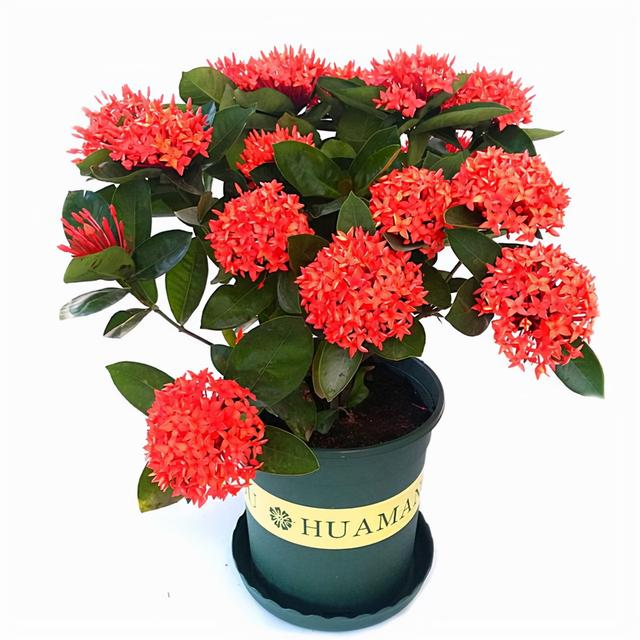
Ixora
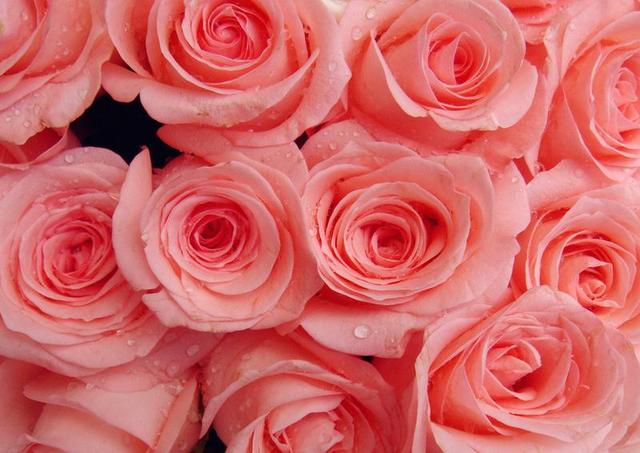
Rose
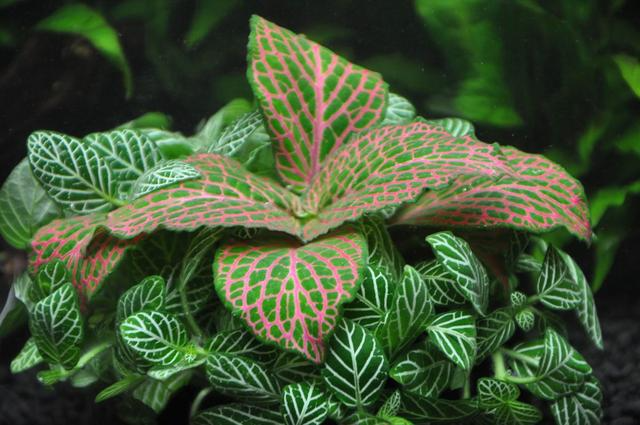
Net-grass
Yew/anti-cancer
Plant Name | Yew | Aliases | Purple cedar , red cypress | |
Family | Taxaceae Taxus | |||
Morphological characteristics | The yew is an evergreen tree . Its twigs turn yellow-green or light reddish brown in autumn. Its leaves are strip-shaped and dioecious. Its seeds are oblate. The seeds are used to extract oil and can also be used as medicine. | |||
Cultivate value | It can prevent and treat diseases, and can significantly relieve the pain caused by angina pectoris, mastitis and breast hyperplasia, and can also prevent the sudden occurrence of cardiovascular and cerebrovascular diseases. Producing oxygen day and night: Yew is a rare tree species that produces oxygen day and night, belonging to the CAM plant. Such plants inhale carbon dioxide and exhale oxygen 24 hours a day. Cancer prevention and treatment: Taxol, a yew extract, has a unique anti-cancer mechanism. Numerous scientific demonstrations and clinical tests have shown that the effectiveness of Taxol against tumor pathogens is over 75%, especially for advanced metastatic ovarian cancer, breast cancer, and non-small cell lung cancer. Purify the air: Yew can absorb indoor decoration pollutants such as formaldehyde and toluene 24 hours a day. It can also absorb toxic and harmful substances such as carbon monoxide, nicotine, sulfur dioxide and nitrogen dioxide in the air, playing a role in purifying the air. Absorb radiation: According to the test results of the National Environmental Monitoring Center, yew can regulate temperature and humidity, and has the functions of sound absorption, absorption of radiant heat, heat insulation and resistance to computer radiation. Auspicious meaning: The yew tree is also known as the "longevity tree" and the "auspicious tree". It has the function of repelling mosquitoes and insects, and has strong resistance to diseases and insects. The tree age can be more than 5,000 years old, so it is called the "longevity tree". | |||
Growth habit | Habitat: Shade-tolerant, can grow under dense forests, perennial, not forest. Likes cool and humid climate , can withstand low temperature below -30℃, strong cold resistance, optimum temperature 20 to 25℃, belongs to shade-tolerant tree species. Likes moisture but afraid of waterlogging, suitable for planting in loose, moist and well-drained sandy loam | |||
Cultivation Technology | When breeding seedlings from seeds, attention should be paid to the storage method of seeds. Sand seeds should be mixed or temperature-controlled, which has a good effect on germination and breaking dormancy after wintering. Before sowing, the seed coat should be rubbed, seeds should be soaked in warm water, and treated with chemicals and hormones. Shading after emergence is the key to seedling cultivation. It can prevent seedlings from being burned by high temperatures and keep them moist. The transmittance should be 40%. The emergence rate of both the northeastern yew and the southern yew can reach 70~80%, and the emergence temperature is required to be higher than 15 degrees. | |||
Plant Name | Bamboo | Aliases | Peace Bamboo. Peace Tree. | |
Family | Podocarpaceae Podocarpus | |||
Morphological characteristics | The leaves are green, oval, and full of vitality. | |||
Cultivate value | It has the function of protecting against radiation and absorbing harmful gases, so it is suitable for indoor planting. Meaning: peace and good luck. | |||
Growth habit | Neutral and slightly yin, afraid of excessive waterlogging. |
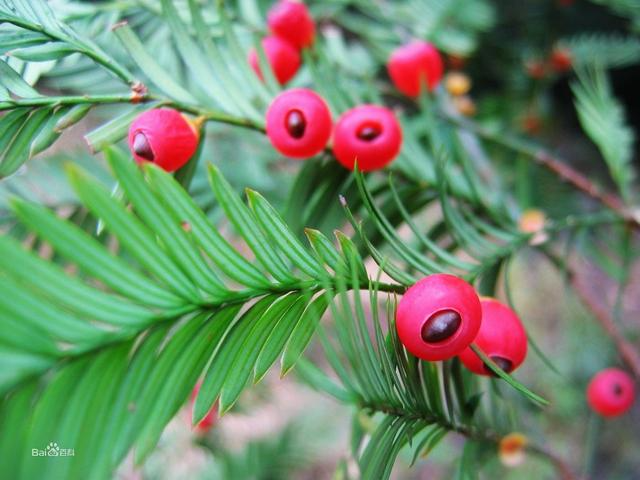
Yew
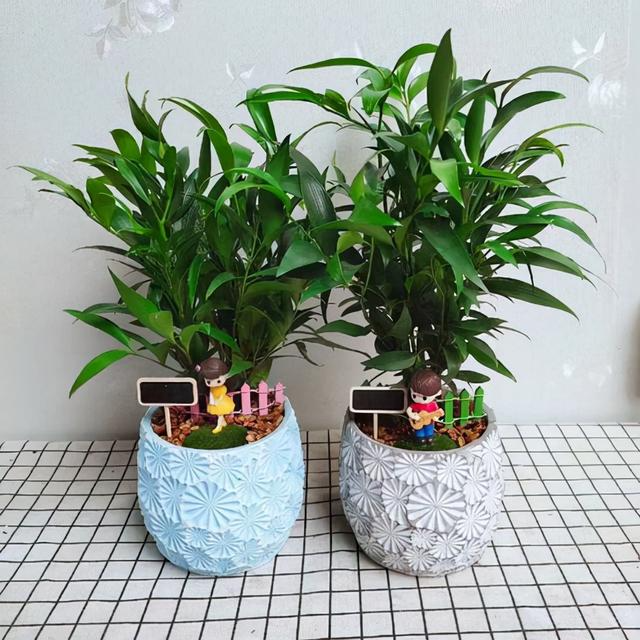
Bamboo
Mosquito repellent grass
Plant Name | Mosquito repellent grass | Aliases | ||
Family | Geranium | |||
Morphological characteristics | Morphological characteristics: Young plants are herbaceous and juicy; old plants are semi-lignified with hollow pith. | |||
Cultivate value | Repel mosquitoes, purify the air, and improve the air quality in unventilated environments. | |||
Growth habit | It likes warmth and water. It can survive at temperatures above -3°C. 10-25°C is the suitable growth temperature. Temperatures below 7°C and above 32°C are not conducive to growth . Water thoroughly every 3-6 days, but water should not accumulate . It likes neutral to slightly acidic soil and is generally fertilized once every 15-20 days. |
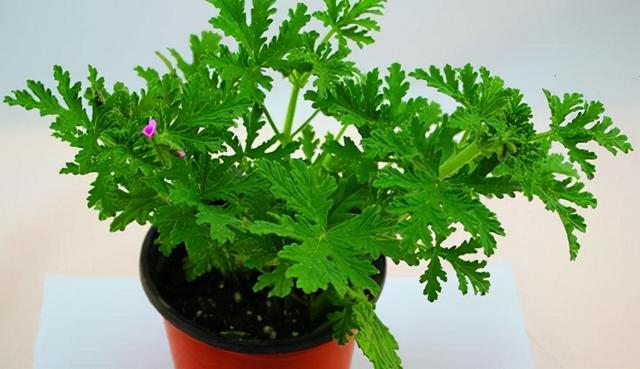
Plant Name | Mimosa | Aliases | Mimosa, Huhu grass, and Ugly grass | |
Family | Leguminosae perennial herb or subshrub | |||
Morphological characteristics | It grows in clusters, with woody stems at the base, up to 1 meter high, and has poor cold tolerance. It is native to tropical America. The flowering period of Mimosa is from July to October. The flowers are pink, and the head inflorescence is spherical, shaped like a pompom. After flowering, it produces pods , which are oblate in shape. | |||
Cultivate value | The flowers, leaves and pods of mimosa all have good ornamental effects and can be grown as potted flowers on balconies and indoors, and can also be planted in courtyards. | |||
Growth habit | It likes warm and humid environment, is not very demanding on soil, likes light, but can tolerate partial shade, so it can be used as an indoor potted flower for appreciation. | |||
Cultivation Technology | It can be propagated by sowing seeds in spring and autumn. Sowing can be done in 35℃ warm water for 24 hours before sowing. Sowing in shallow pots, covering with 1-2 cm of soil, watering by immersion pot method, keeping moist, and germination after 7-10 days at 15-20℃. When the seedlings are 5 cm tall, they are potted. When collecting seeds, choose strong mother plants, strengthen management, and collect them as they mature during the fruiting period. The pods will automatically crack when they are ripe. |
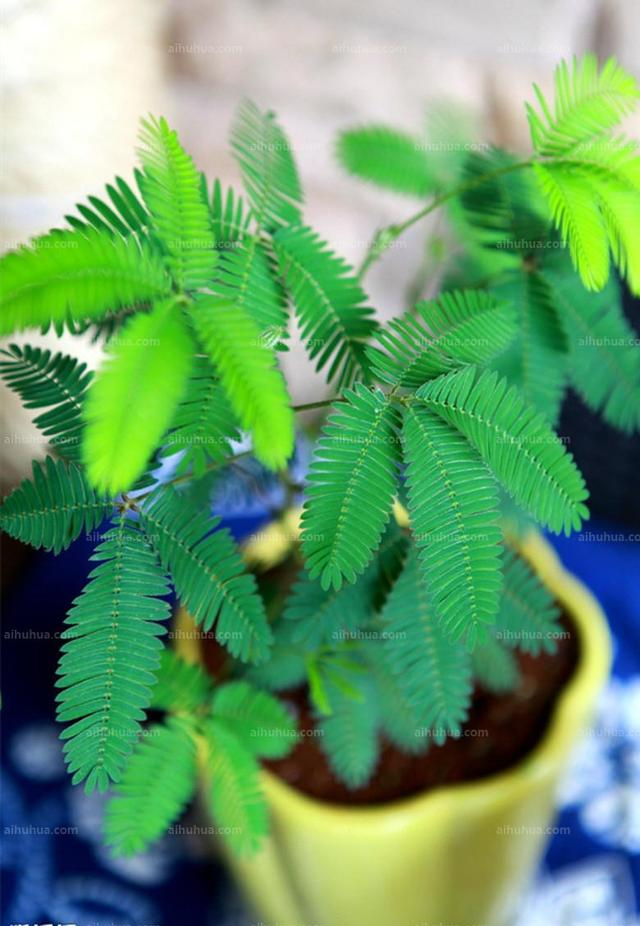
Plant Name | Green Apple | Aliases | ||
Family | ||||
Morphological characteristics | It is a perennial evergreen herb with leaves growing from the roots in clusters, and the leaf sheaths embrace the stems. The plant is relatively tall, usually up to 40 cm to 70 cm. The petiole is light brown-purple, and the leaves are round or nearly round. | |||
Cultivate value | The green apple arrowroot has round leaves, rich texture, verdant leaves, and neatly arranged stripes. It has a high ornamental value and is particularly attractive. It is used to decorate large public places such as shopping malls, hotels, conference rooms, and reception rooms. If it is planted in small and medium-sized exquisite ceramic pots, it is suitable for decoration in the living room, study, and bedroom of ordinary homes, and it also has a unique atmosphere. | |||
Growth habit | It likes a semi-shady environment with high temperature and humidity, and is afraid of cold and strong light. The suitable temperature for growth is 18℃ to 30℃, and it requires a high relative humidity of air, and avoids dry pot soil and environment. It is suitable to use loose, fertile, well-drained, acidic leaf humus or peat soil rich in organic matter for cultivation. |
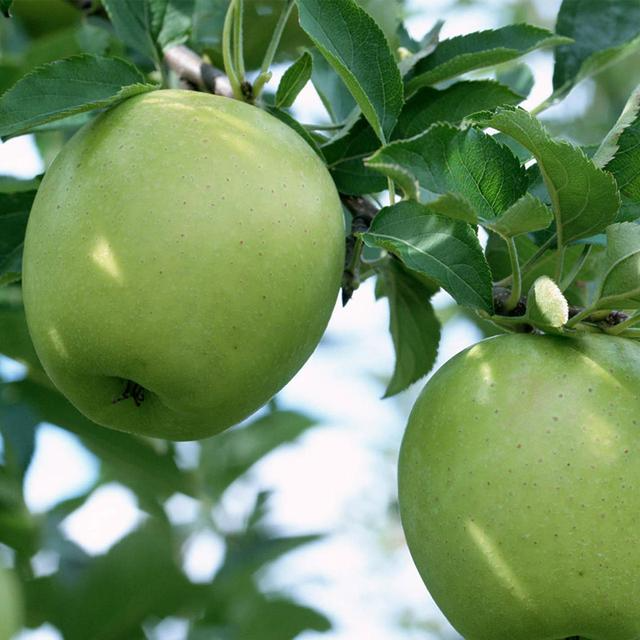
Green Treasure/Big Leaf Oxtail, Oxtail Forest-(Rice Washing Water) (Yes)
Plant Name | Green Treasure | Aliases | ||
Family | ||||
Morphological characteristics | The bark is light grey with deep longitudinal fissures. The leaves are 1-2 times pinnate compound, with papery leaflets. They are oblong-ovate, 4-10 cm long, 2.5-4.5 cm wide, with acuminate tips and broad cuneate bases. The lateral veins are slender, and the branch veins are sparse and reticulate. The flowers are bisexual, in racemes or panicles, with pale red calyx, irregularly tubular, and 3-5 shallowly lobed. The corolla is pale yellow and bell-shaped. It is 3.5-5 cm long. It begins to bloom and bear fruit in 7-8 years. | |||
Cultivate value | The tree has a beautiful shape and elegant posture. The flowering period is long, the flowers are large, the fragrance is elegant, the colors are beautiful and numerous, and almost every branch has an inflorescence; many flowers on an inflorescence axis often bloom at the same time, forming a long string of golden flowers, which is pleasing to the eye. Therefore, it has extremely high ornamental value and garden application prospects. It is an excellent tree species for landscaping in towns, streets, parks, courtyards, etc. in tropical and subtropical areas. | |||
Growth habit | It is a positive tree species. It likes sunlight, tolerates partial shade, grows quickly, likes loose soil and a warm and humid environment. It needs sufficient nutrients to ensure vigorous growth, so it needs frequent fertilization during the growth period. Generally, a mixed fertilizer is sufficient. You can also use diluted thin fertilizer water instead of clean water to irrigate the pot soil. | |||
Maintenance of the Green Treasure Tree 1. Warm and hot environment. The suitable temperature for growth is 20℃-21℃ during the day and 18℃-19℃ at night. In midsummer, try to keep the temperature below 27℃. When the ambient temperature is very high, it is necessary to build a shed to provide shade and increase the humidity of the environment and leaves. During the winter, it is best to maintain a shed temperature of not less than 8℃, and the minimum should not be less than 5℃ to avoid frost damage. 2. Light: It is a light-loving plant, but can tolerate shade . It can grow in full sun or semi-shade. However, do not expose it to direct sunlight in summer , and set up a shed to block the light. When placing potted plants indoors, it is best to place them in front of a well-lit window or on a balcony to receive semi-shade or scattered light. If it is placed in a dimly lit room for a long time, it is easy to cause leaf fall. When planting in pots at home, place it in a higher position in front of a window or balcony during the winter to allow it to receive more light. 3. Humidity: It prefers relatively moist soil and cultivation environment. The air humidity should generally be maintained between 70-80%, and the maximum should not exceed 85%. If placed at home, the plant can be sprayed with slightly warm water frequently to maintain its elegant appearance and increase the environmental humidity. 4. Substrate: A loose, breathable and well-drained substrate should be selected. You can use the current imported substrate or domestic peat soil plus perlite and vermiculite. You can also use leaf humus and river sand mixed cultivation. The current popular cultivation method in the market is to plant one or two plants in each pot, and the height of each pot is more than 70cm. 5. Fertilizer: It grows quickly and needs sufficient nutrients to ensure vigorous growth, so it is necessary to fertilize frequently during the growth period. Generally, a mixed fertilizer of 20-10-10 or 15-15-15 of nitrogen, phosphorus and potassium is enough. You can also use diluted thin fertilizer water (rice water) instead of clean water to irrigate the pot soil. |
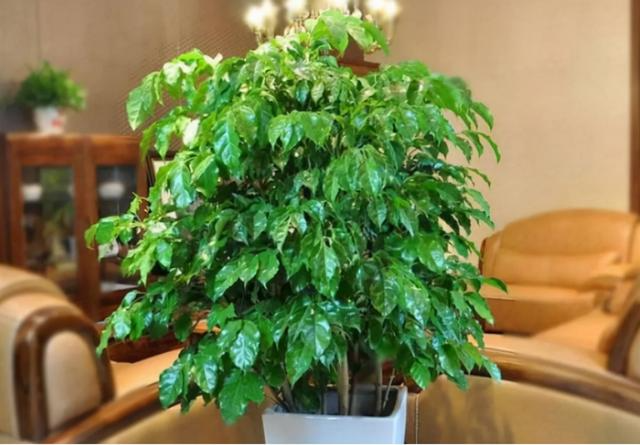
Plant Name | Tillandsia | Aliases | Tillandsia, purple pineapple, pineapple | |
Family | Tillandsia | |||
Morphological characteristics | First it grows obliquely and then horizontally, in an arched shape. It is light green to green, with a brown base and green-brown back. The involucre is fan-shaped, pink, and blooms purple-red flowers from bottom to top. The flower diameter is about 3cm. The bracts can be viewed for up to 4 months | |||
Cultivate value | Used for indoor potted decoration. Can be placed on balconies, windowsills, desks, etc., can also be hung in the living room, tea room, can also be used as a foil material for flower arrangement. It has a strong ability to purify the air. It is used to beautify the environment, novel and elegant. | |||
Growth habit | It likes bright light, high temperature and high humidity environment, and avoids direct sunlight. It grows on big trees in tropical forests in its native place and is relatively resistant to dryness and cold. The suitable temperature for growth is 20~30℃, and the minimum temperature for wintering is 10℃. | |||
Cultivation Technology | It can be propagated by budding method or sowing method. Shade and water well in hot season, place in sunny place and control water in winter. The temperature should not be lower than 10 degrees Celsius. Growth period: ① Spray the leaves with liquid fertilizer once every 2 weeks. ② Keep the pot soil moderately moist and provide sufficient diffuse light. ③ Remove the remaining flowers immediately after the flowers wither. |
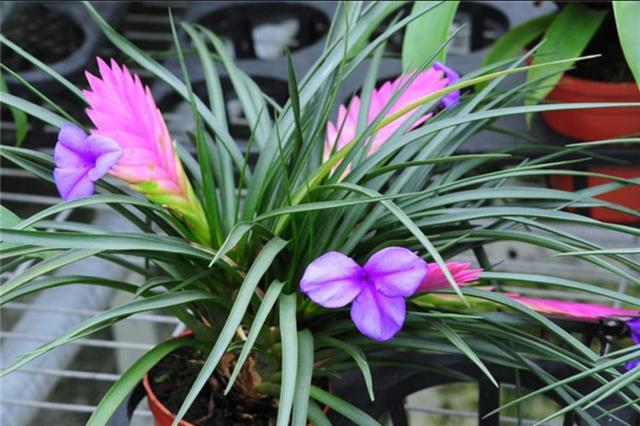
Plant Name | Lilac | Aliases | Baijie, Qingke, lilac , syringa, lilac | |
Family | Oleaceae Syringa | |||
Morphological characteristics | The lilac plant is 2 to 8 meters tall, with leaves opposite, entire or sometimes lobed, rarely pinnately compound . | |||
Cultivate value | Ornamental lilac is a deciduous shrub of the genus Syringa in the family Oleaceae . It is a famous garden flower with large inflorescences , luxuriant flowers, elegant and fragrant flowers, strong habits , and easy cultivation. Therefore, it is widely cultivated and used in gardens. Symbolic meaning: innocence, first love, humility, glory | |||
Growth habit | Lilac likes sunlight, is relatively shade-tolerant, likes moisture, but avoids waterlogging, is cold-resistant and drought-resistant, and generally does not need to be watered too much. Lilac requires fertile soil and well-drained sandy soil. Lilac does not like heavy fertilizers, so do not apply too much fertilizer, otherwise it will affect flowering. The corolla is a raceme, which belongs to the infinite flower sequence. |
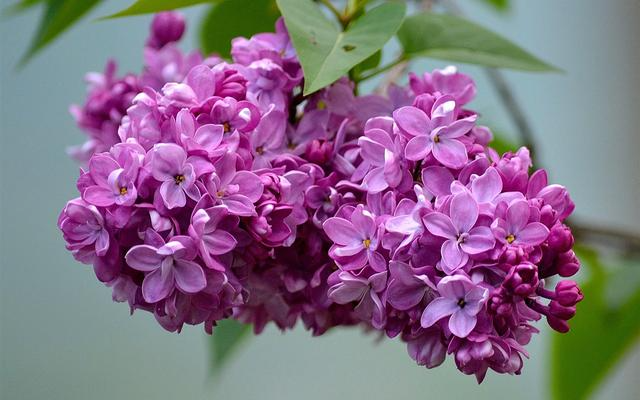
Plant Name | African Jasmine | Aliases | Also gray lily wood, Qinghuang fruit | |
Family | Loganaceae | |||
Morphological characteristics | An evergreen creeping vine with stems up to 4 meters long. Leaves are opposite, 15 centimeters long, broadly ovate or oblong, with pointed tips, thick leathery, entire margins, and dark green surface. It blooms in summer. The inflorescence is corymbose , axillary, with 5-lobed sepals. The corolla is high-footed saucer-shaped, with 5-lobed tips, and the lobes are oval-oblong. The corolla tube is 6 centimeters long, ivory white, waxy, and richly fragrant . The follicles are oval, as big as a mango, and the seeds have white silky seed hairs on the top. | |||
Cultivate value | African jasmine: The volatile oils produced have significant bactericidal effects, can make people relax, promote sleep, and improve work efficiency. African jasmine can easily adapt to unfamiliar environments and can be planted in courtyards and balconies. | |||
Growth habit | Whether planted in the ground or in pots, sufficient water is required, but water should not accumulate at the roots, otherwise the roots will easily rot. In spring and autumn, water should be kept moist; in the rainy season, be careful to prevent water accumulation; in the hot summer, spray water once in the morning and afternoon to increase humidity and reduce temperature; in winter, for indoor potted plants, it is advisable to keep the pot soil slightly moist, and spray water on the leaves when the temperature is relatively high around noon . In spring, summer and autumn, under normal fertilization conditions, if the lower leaves of potted plants turn yellow and fall off, it is likely due to water accumulation and root rot, and the pots should be turned over and the soil changed in time; in summer, if watering is neglected and the new shoots wilt and droop, do not water the pot soil immediately, but spray some water on the leaves first, and then water the pot soil with an appropriate amount of water after the leaves recover slightly. | |||
Cultivation Technology | It is advisable to collect the ripe fruits from October to December. After the seeds are removed, they are broadcast or sown in loose and fertile sandy loam seedbeds, covered with 2 to 3 cm of soil, and covered with straw or mulch to keep warm or hide the seeds in the sand until the cracks of the seeds are exposed before sowing. Seeds sown in late autumn and early winter will not germinate until the next spring. After germination, remove the grass in time and strengthen water and fertilizer management; build a shed to provide shade in summer, and it is expected to cultivate tall plants with good stem shape. |
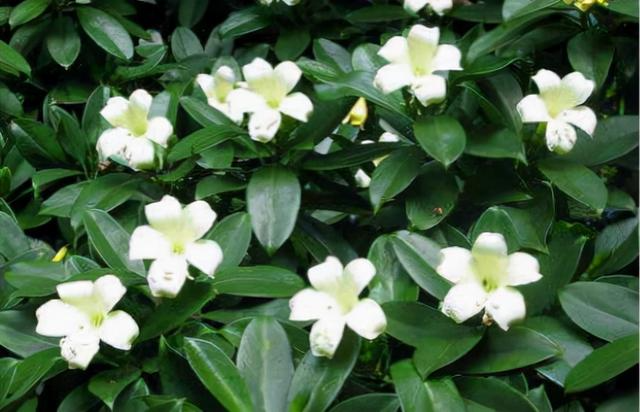
Plant Name | Scutellaria scabra | Aliases | Red yew , red loblolly | |
Family | Hamamelidaceae | |||
Morphological characteristics | Evergreen shrub or small tree . Blooms in April and May, with a long flowering period of about 30 to 40 days, and blooms again on National Day . 3 to 8 flowers clustered on the peduncle in terminal capitula, purple-red. | |||
Cultivate value | Loropetalum chinense has luxuriant branches and leaves, various tree shapes, flexible wood, and is resistant to pruning and twisting. It is a good material for making tree stump bonsai. Its flowers, roots, and leaves can be used for medicinal purposes. It is widely used in courtyards, parks, roads, and other areas as the best landscaping plant. | |||
Growth habit | It likes light and tolerates shade, but its leaves tend to turn green in shade. It has strong adaptability and is drought-resistant. It likes warmth and tolerates cold. It has strong germination and branching ability and tolerates pruning. It tolerates barrenness, but is suitable for growing in fertile, moist, slightly acidic soil. | |||
Cultivation Technology | It can be carried out from March to September. Loose loess is selected as the cutting medium . Ensure that the cutting medium is ventilated and water-permeable and has a high air humidity. Keep it warm but avoid direct sunlight. At the same time, pay attention to the ventilation and air permeability of the cutting environment. Under warm and humid conditions, the red healing body will form in 20 to 25 days, and 3 to 9 new roots with a thickness of 0.1 cm and a length of 1 to 6 cm will grow after 1 month. The propagation coefficient of the cutting method is large, but the growth is weak and the time to go out is long. The growth of multi-grafted seedlings is strong, the seedlings are quickly grown, but it is more labor-intensive. 2.1.3 Sexual reproduction . Sowing in spring and summer, the germination rate of red Loropetalum is high . It germinates about 25 days after sowing. It can grow to 6 to 20 cm in height in 1 year and produce 3 to 6 branches. The new roots of red Loropetalum seedlings are red and fleshy. They must be carefully managed in the early stage until the root system is lignified and turns brown, then they can be extensively managed. Sexual reproduction is generally not used for seedling production because of its long seedling period, slow growth, and the appearance of white Loropetalum seedlings (reversion phenomenon), but is used for breeding research of Loropetalum chinensis. | |||
Plant Name | rosemary | Aliases | ||
Family | Lamiaceae, Rosmarinus | |||
Morphological characteristics | The stems and old branches are cylindrical, the cortex is dark gray, irregularly cracked longitudinally, and peeled off in blocks. The young branches are quadrangular and densely covered with white star-shaped hairs. White flowers bloom in spring and summer. | |||
Cultivate value | Enhance memory, refresh the mind, relieve headache symptoms, and improve hair loss. Rosemary has a refreshing scent that can enhance brain function, improve headaches, and improve memory. Students who need to memorize a lot may wish to smell more rosemary. Edible: Improve language, vision, hearing disorders, enhance concentration, treat rheumatism, strengthen liver function, lower blood sugar, help treat arteriosclerosis, and help paralyzed limbs recover. Eliminate bloating, enhance memory, refresh the mind, relieve headache symptoms, and are also very effective for colds, bloating, obesity, etc. Memories: Rosemary is defined as a symbol of love, loyalty and friendship, and its flower language is memories, wiping away the sadness of memories "I will never forget the promise you made to me, please keep your love for me forever, miss me and think of me." Commemoration: Italians would throw sprigs of rosemary into the graves of the deceased during funeral ceremonies to show respect and remembrance for the deceased. In Victorian England, the flower language of rosemary meant commemoration, symbolizing long-lasting love, loyal friendship and everlasting remembrance. | |||
Growth habit | 1. The plants should be well ventilated and kept cool 2. Sufficient sunlight (pests and diseases often occur in hidden places that are not ventilated and cannot be exposed to sunlight) 3. Avoid hot and humid climates and environments 4. Cut off the excessive and old dead branches and leaves, and pick up the dead branches and leaves that fall on the surface of the potting soil to avoid attracting pests and diseases. |
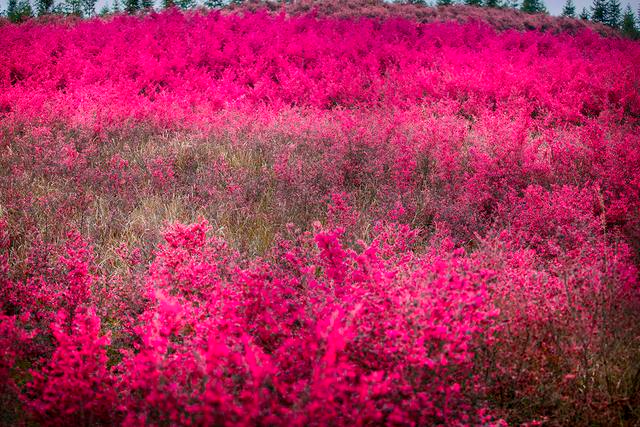
Scutellaria scabra
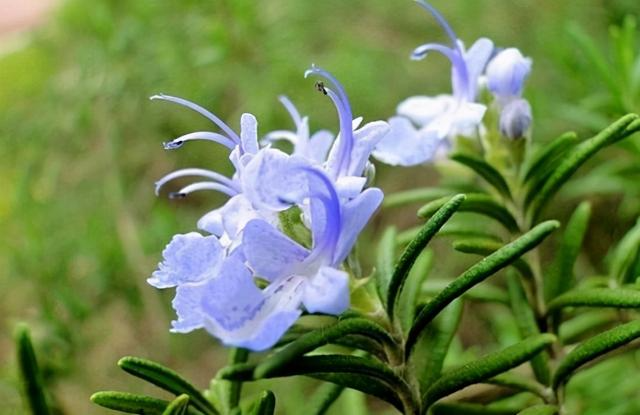
rosemary
Plant Name | Jasmine | Aliases | ||
Family | Oleaceae | |||
Morphological characteristics | The branches have obvious wart-like protrusions. The leaves are dark green, the buds are tight, round and short, and the top is | |||
Cultivate value | The jasmine, an evergreen shrub, has green leaves, white flowers and a strong fragrance. It is a common ornamental fragrant flower in gardens and potted plants . It is often used in potted plants to decorate the interior, which is elegant and pleasant. It can also be processed into decorations such as wreaths. The yellow and fragrant white flowers of the deciduous vines are one of the best ways to decorate the winter gardens in many foreign gardens. "The flowers blooming in the garden are not as fragrant as this one", it is the jasmine that "can make a room fragrant". Although jasmine is not gorgeous, it has the sweetness of roses, the fragrance of plum blossoms, the remoteness of orchids, and the elegance of magnolias. Jasmine is pure, rich, fragrant, and long-lasting. Its flower language expresses loyalty, respect, purity, chastity, simplicity, exquisiteness, and charm. Many countries regard it as a flower of love. Young men and women send each other jasmine to express their faithful love. It is also passed on among people as a flower of friendship. Putting a jasmine wreath around the guest's neck and letting it hang down to the chest shows respect and friendship, and has become a courtesy of hospitality. Jasmine oil can be extracted from jasmine flowers. The main components of the oil are benzyl alcohol and its esters, jasmine, linalool , and linalool benzoate. The roots contain alkaloids and sterols. Animal experiments show that jasmine root alcohol extract can significantly reduce the spontaneous activity of mice; it can prolong the sleep time of mice induced by cyclohexylbarbital; and it can reduce the ability of mice to move passively. Therefore, it can be considered that jasmine root has an inhibitory effect on the central nervous system . Jasmine flowers, leaves and roots can all be used for medicinal purposes. Generally, the roots are dug up in autumn, sliced and dried for later use; the flowers are picked in summer and autumn, dried for later use. It has the effects of pungent, sweet, cool, clearing away heat and detoxifying, and removing dampness. Indications It regulates qi and harmonizes the middle, relieves depression and eliminates filth. It is mainly used to treat diarrhea, abdominal pain, red and swollen eyes, sores, swelling and poison, etc. Nutritional Information Every 100 grams of jasmine contains 2-3 grams of volatile oily substances. The main components are benzyl alcohol or its lipids, jasmine, linalool, linalool benzoate, etc. It also contains substances such as oxadiazole and jasmine lactone. Dietary effects 1. Promotes the flow of qi and relieves pain. The volatile oil contained in jasmine has the effect of promoting the flow of qi and relieving pain, relieving depression and dispersing stagnation. It can relieve symptoms such as chest and abdominal distension and pain, diarrhea, tenesmus, etc. It is an excellent food therapy for pain relief. 2. Antibacterial and anti-inflammatory. Jasmine has an inhibitory effect on many bacteria. It can be taken orally or applied externally to treat inflammatory diseases such as red eyes, sores, and skin ulcers. Disease treatment For red, swollen and painful eyes and tears in the wind, use an appropriate amount of jasmine decoction for fumigation and washing; or add 9 grams of honeysuckle and 6 grams of chrysanthemum, decoct in water and drink. For tendon and bone repair and pain relief, crush the jasmine root, stir-fry with wine, and wrap the affected area. For tooth decay, grind the jasmine root into powder , mix with cooked egg yolk, and plug it into the caries. For insomnia, use 1.5 grams of jasmine root, grind it into water and drink. | |||
Growth habit | In spring, from April to May, jasmine is growing branches and leaves, and the water consumption is not large. It can be watered once every 2-3 days, around noon, to see the moisture, and watering must be thorough; May to June is the spring flowering period of jasmine, and watering can be slightly more; June to August in midsummer is a hot climate , which is the peak flowering period when jasmine grows fast and the evaporation of the leaves is also accelerated . The sunshine is strong and water is needed. It can be watered once in the morning and evening. In drought, water should also be sprayed on the leaves and the ground around the pot. Because jasmine is not drought-resistant and waterlogged, the water in the pot should be poured out in time on rainy days in summer. When the temperature drops in autumn , it can be reduced to watering once every 1-2 days; in winter, the amount of watering should be strictly controlled. If the humidity of the pot soil is too high, it will be unfavorable for wintering. |
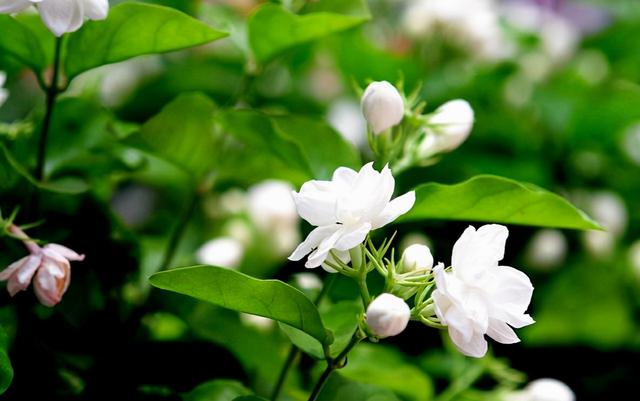
Plant Name | Tuberose | Aliases | Night-scented flower, night-scented orchid | |
Family | Tuberose | |||
Morphological characteristics | A vine-like shrub . The twigs are weak, hairy, and latex-sap-like. The leaves are opposite; the leaf blades are broadly ovate , cordate, or oblong-ovate, 4 to 9.5 cm long, 3 to 8 cm wide, with short acuminate tips, deeply cordate bases, entire margins, 7 to 9 palmate veins at the base, and hairs on the margins and veins. The umbel-shaped cymes are axillary, with up to 30 flowers; the corolla has 5 lobes , oblong, yellow-green , and has a fresh fragrance, which is even more fragrant at night, hence the name of "night-blooming jasmine" or "night-scented flower"; | |||
Cultivate value | Cultivated for viewing. The branches of night-blooming jasmine are slender, and it blooms in summer and autumn. The yellow-green flowers open in the evening, emitting bursts of strong fragrance. In the south, it is often used to decorate courtyards, windows, ponds and pavilions. At the same time, it is also a semi-wild vegetable that is eaten with fresh flowers and buds . It has the effect of clearing the liver and improving eyesight, and can treat red and swollen eyes, measles on the eyes, and corneal cataract removal. | |||
Growth habit | Tuberose mostly grows in woodlands or bushes. It likes a warm, humid, sunny, well-ventilated environment with loose and fertile soil. It is drought-tolerant and barren-tolerant, but not waterlogged or cold-tolerant. It stops growing after the leaves fall in winter. It grows branches and leaves in the spring, with axillary buds or flower buds at each node. As it grows, it continuously produces side branches and inflorescences . It usually blooms from May to October. It has a fragrant smell when it blooms , and it is more fragrant at night. It bears fruit in winter. Potted tuberose requires a well-ventilated environment. It should be placed in a sunny courtyard or on a balcony from early May to the end of September. Although it likes plenty of sunlight, it should be avoided from being exposed to the sun at noon in summer. 3. Fertilization. During its growth, liquid fertilizer should be applied every 10 to 15 days . Starting from late April, thin liquid fertilizer should be applied every half month. From mid-May, it can ensure continuous flowering. If high-efficiency humic acid liquid fertilizers such as Chunquan 883 or Huimanfeng can be applied, the effect will be better. Adjust water. Summer is the peak growth season. In addition to applying enough fertilizer , the potting soil must be kept moist at all times and watered twice a day if necessary. If it is a seedling, spray water on the leaves once or twice a day. | |||
Cultivation Technology | 1. Choose cuttings. Choose healthy or disease-free branches . On the same plant , choose branches from the middle and upper parts of the current year facing the sun. The branches should have short internodes, strong leaves , and full buds. Do not choose branches that are about to bloom or branches that are not yet fully grown. Long branches. 2. Select the substrate . Use peat soil , leaf mold and sand in a ratio of 3:3:4. This soil has the characteristics of increasing bed temperature, retaining water, ventilation, fertility, and acidity, which is suitable for branches to take root and sprout. 3. Treat the cuttings. Treat the cuttings with ABT rooting powder or other agents before cutting to promote rooting. Cut the cuttings into 8 to 12 cm sections with 2 to 3 buds on them. The incision at the bottom of the cuttings should be 0.5 cm below the node. The incision should be smooth. Cut off the lower leaves and leave only the top 2 to 3 leaves. The insertion depth is generally about 3 cm. |
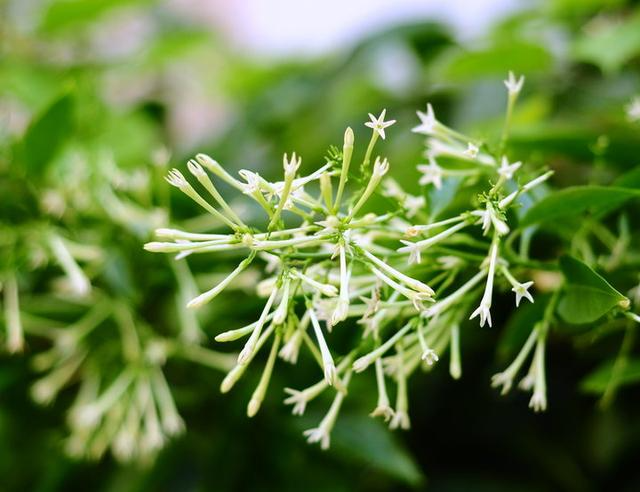
Plant Name | Crape Myrtle | Aliases | Full House, Full Rice | |
Family | Celastraceae | |||
Morphological characteristics | Lythraceae, deciduous shrub or small tree, up to 7 meters high, with irregular crown , smooth bark, light brown, and four-angled branches; leaves are opposite, elliptical to rounded, 3-7 cm long; panicle inflorescence terminal, flowers are red, purple , also known as crape myrtle, stem 3-5 cm. Long flowering period , from June to September; capsule nearly spherical, stem about 1.2 cm, fruit ripening period from October to November. | |||
Cultivate value | People commonly call it "ticklish tree ", which is a peculiar tree among trees. Crape myrtle is a variegated tree, also known as barkless tree, full house red, and 100-day red. Because of its long flowering period, the flowers bloom continuously from July to October, so it is called 100-day red. Yang Wanli, a poet in the Song Dynasty , praised it in a poem: "It is more beautiful than crazy and drunk, and it is particularly slanting under the pressure of dew and wind. Who says that flowers cannot be red for a hundred days? Crape myrtle blooms for half a year." Xue Hui of the Ming Dynasty also wrote: "Crape myrtle blooms the longest, blooming for ten days, summer and autumn, new flowers continue to bloom on the branches." Northerners call crape myrtle trees "monkey thorns", which means that the tree trunk is too slippery and monkeys can't climb it. Its preciousness is that it has no bark. Rare things are valuable. Among the thousands of trees in the world, how many are barkless? The trunk of a young crape myrtle grows epidermis every year and falls off by itself every year. After the epidermis falls off, the trunk looks fresh and smooth. The old crape myrtle tree has no skin on its trunk, and its veins are exposed. It is smooth and shiny. When the crape myrtle tree grows up, the bark on the trunk falls off, and it is smooth and skinless. If people touch it gently, the branches and leaves will shake immediately, and the whole body will tremble, and even make a faint "crackling" sound. This is a systemic reaction of its "tickling" nature, which is really amazing. The roots, leaves and bark of crape myrtle are used as medicine, which has the effects of clearing away heat and detoxifying, promoting blood circulation and stopping bleeding. Crape myrtle is the dried flower of Campsis grandiflora (Thunb.). K. Schum. or Campsis radicans (L.) Seem. of the Bignoniaceae family. It is harvested and dried when the flowers are in full bloom in summer and autumn. Li Shizhen discussed in "Compendium of Materia Medica" that its bark, wood and flowers have the effects of promoting blood circulation and menstruation, relieving pain, reducing swelling and detoxifying. The seeds can be used to make pesticides , which have the effect of repelling and killing insects. The leaves can cure white dysentery, the flowers can cure postpartum hemorrhage and fetal toxicity in children, and it can cure carbuncles and ulcers. It can be said that the whole body is a treasure. Poems about Crape Myrtle Crape Myrtle Dumu A new branch greets the autumn dew in the morning, but it does not occupy the best spring in the garden. What's the use of peach and plum trees being speechless? They are smiling towards the wind and the sun. Crape myrtle blooms in summer and autumn, and peach and plum blossoms are no longer seen. This sentence uses peach and plum blossoms to highlight the uniqueness of crape myrtle, and peach and plum blossoms to contrast the beauty and long flowering period of crape myrtle. Du Mu wrote "Crape Myrtle" to praise himself, and people called him "Du Crape Myrtle". Crape Myrtle Bai Juyi The documents in the Silken Tower are quiet, and the water clock in the Bell and Drum Tower is long. Who is my companion when I sit alone in the evening? The crape myrtle flowers and the crape myrtle man. | |||
Growth habit | It likes warm and humid environment, likes sunshine and tolerates shade, has certain cold resistance and drought resistance. It likes to grow in calcareous soil and fertile sandy loam, and can also grow in clay soil, but the growth rate is slow, and the roots are easy to rot in low-lying waterlogged areas. It has strong resistance to sulfur dioxide, hydrogen fluoride and chlorine. |
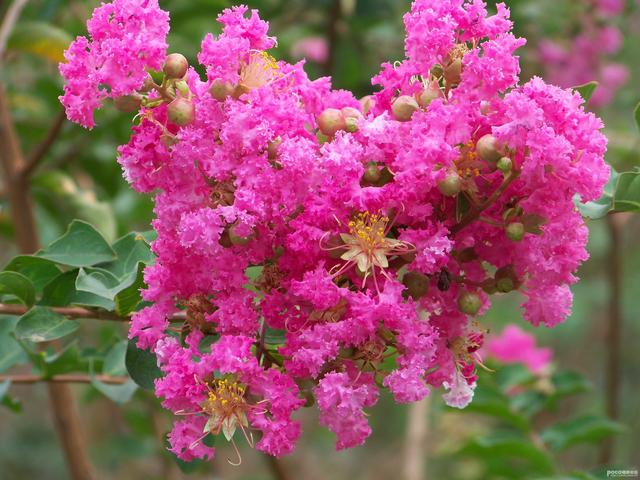
Fortune tree (yes)
Plant Name | Money Tree | Aliases | Gourd chestnut, Kapok, Goosefoot money | |
Family | Bombacaceae, Castanea | |||
Morphological characteristics | Evergreen tree, the tree can be 8-15m tall, palmate compound leaves, 5-7 leaflets, branches are mostly whorled. Flowers are large, up to 22.5cm long, The petals are split, and the flowers are bright red, white or light yellow. It blooms in April and May, and the fruit ripens in September and October. It contains 10 to 20 large, irregularly shaped, light brown seeds. | |||
Cultivate value | The money tree can eliminate formaldehyde and ammonia in the environment. Because of its elegant posture, evergreenness and auspicious name, it is very suitable to be placed in the living room and study. | |||
Growth habit | 1. Temperature. The lowest temperature in winter is 16-18℃. Below this temperature, the leaves turn yellow and fall off. Below 10℃, the plant is prone to death. 2. Light. The fortune tree is a positive plant, but it has a strong tolerance to shade and can be placed in a place with weak light indoors. No matter what environment you are maintaining it in, do not suddenly change its placement. If you suddenly move the plant from a shaded place to strong light, it will burn the leaves and burn the edges, affecting its appearance. 3. Water. It needs sufficient water during the high temperature growth period; but it is drought resistant and will not be harmed if it is not watered for several days. But avoid water accumulation in the pot. Reduce watering in winter. 4. Air temperature. It prefers higher air temperature during the growth period; you can spray a small amount of water on the leaves frequently. |
